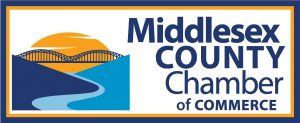
Every Town Has A Story – Central Regional Tourism District
Central Regional Tourism District serves 65 towns within Central Connecticut region that help visitors and locals explore main attractions.
Every Town Has A Story
Every Town Has A Story is a summarized story of the following cities and towns: Andover, Avon, Berlin, Bethany, Bloomfield, Bolton, Branford, Canton, Cheshire, Chester, Clinton, Cromwell, Deep River, Durham, East Granby, East Haddam, East Hampton, East Hartford, East Haven, East Windsor, Ellington, Enfield, Essex, Farmington, Glastonbury, Granby, Guilford, Haddam, Hamden, Hartford, Hebron, Killingworth, Madison, Manchester, Marlborough, Meriden, Middlefield, Middletown, Milford, New Britain, New Haven, Newington, North Branford, North Haven, Old Saybrook, Orange, Plainville, Portland, Rocky Hill, Simsbury, Somers, South Windsor, Southington, Stafford, Suffield, Tolland, Vernon, Wallingford, West Hartford, West Haven, Westbrook, Wethersfield, Windsor, Windsor Locks, Woodbridge.
Each Tourism Representative from Central Regional Tourism District has provided a summarized biography of their town to help spread history, attractions, accommodations, popular events, suggested getaways, family fun, and more!
Start Exploring What Central Connecticut Has To Offer!
BRIEF HISTORY OF AVON
Avon had about 160 residents who built the first meetinghouse in 1754 when the area was called Northington. It was a part of Farmington at this time. A new meetinghouse was built in 1818 in West Avon and another in 1819 in the center of Avon. In 1828, Northington petitioned the Connecticut General Assembly to become a town which was approved on May 5, 1830, “incorporating into a distinct town, by the name of Avon.”
Avon’s business boomed with the completion in 1837 of the Farmington Canal, linking Avon to New Haven and Northampton, Mass., allowing for homegrown products to be sold beyond the valley. Avon blossomed with the coming of energetic and talented men and women from Europe in the early 20th century to work at the impressive Climax Fuse factory (later named Ensign-Bickford). They built Avon Old Farms School for Boys, farmed, and operated shops. Education advanced even within the constraints of one-room schoolhouses. New schools opened in 1949.
Avon’s past is present. The town converted the former Ensign-Bickford Company fuse factory buildings into offices and artists workshops. In Avon’s landscape are reminders of the Farmington Canal, the railroad, and Albany Turnpike (Rt. 44). The Avon Historical Society operates the restored 1865 Pine Grove Schoolhouse (listed on the National Register of Historic Places), the 1823 Schoolhouse No. 3, the 17th C. Derrin Farm, and the late 18th C. Horse Guards Barn. www.avonhistoricalsociety.org
In 1996, the town and the Gildo T. Consolini Post 3272, Veterans of Foreign Wars, dedicated the Avon Veterans Memorial on the Town Green. Avon reached a milestone in 2005, celebrating its 175th anniversary. Its history is preserved, maintained and collected by the Avon Historical Society and the Avon Free Public Library’s Marian Hunter History Room. Today Avon’s population of over 7,000 households is estimated at just over 18,000.
Avon is a typical New England community full of friendly people to get to know and places th work, visit, and play.
Interesting Places
Farmington Canal Heritage Trail. An 80-mile trail running from New Haven to Northampton, Mass. Paved for walkers, bikers and roller bladers. It is also part of the East Coast Greenway from Florida to Maine. Map http://fchtrail.org/pages/maps_north.asp
Pine Grove School House (1865) This one room schoolhouse was built in 1865 and taught the “three R;s,” as well as music and history to students through the 1940’s. Today, it represents a classroom of 1900, complete with bolted desks, hand slates, and textbooks. ). Open on Sun. 2-4 pm from June through September or by appointment. Free, 860.678.7621.
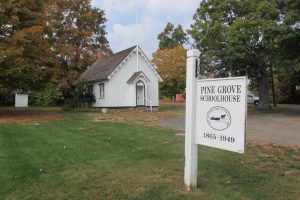
Heublein Tower – This National histo4ric Landmark at Talcott Mountain State Park was the country retreat of Gilbert F. Heublein (1850-1937), co0-founder of an international food and beverage importing firm. The Tower, built in 1914, stands atop the highest point on Talcott Mountain at approximately 1,000 feet above sea level and offers a 5,000 square-mile view from the observatory room. The park is open year-round for hiking. The Tower (accessible by foot) is open from the first weekend in May until the end of October, Thursday through Monday from 10am to 5pm. 860.242.1158; www.friendsofheubleintower.org.
Avon Old Farms School. The 860-acre boys’ boarding school was designed and built by the first woman architect, Theodate Pope Riddle, whose home, Hill-Stead Museum in Farmington is open to the public. 500 Old Farms Rd., Avon. (Hill-Stead: 35 Mountain Rd, Farmington- 860.677-4787).
Marian Hunter History Room. The Avon Free Public Library is open to genealogists, researchers, and others during regular business hours. In addition, the Avon Historical Society has rotating exhibits outside the room on local history topics. 281 Country Club Rd. 860-673-9712
First Company Governor’s Horse Guards (1778). The oldest active continuously mounted Calvary Unit in the U.S. The public is invited on Thurs. evening 7:30-10 pm for their weekly training. 280 Arch Rd. https://www.ctfirsthorseguard.org/
Farmington Valley Arts Center. Situated in converted factory buildings, more than 20 studios and two galleries make up FVAC, where regional artists create and sell their works: pottery, paintings, ceramics, sculpture, jewelry and more. The Fisher Gallery and the Esther B. Drezner Visitor’s Gallery are open year-round. 25 Arts Center Ln. http://artsfvac.org/ ,860.678.1867.
Countryside Park. A 17.5-acre park with two ponds, picnic area, and trails. 335 Huckleberry Rd. Map at http://www.avonct.gov/sites/avonct/files/file/file/countryside_park_trail_map.pdf
Other parks found at http://www.avonct.gov/recreation-and-parks-department/pages/parks-public-places-and-facilities
Lodgings:
Avon Old Farms Hotel, 279 Avon Mountain Road, Avon, 677-1651; 800.836.4000, www.avonoldfarmshotel.com
Residence Inn by Marriott, 55 Simsbury Road, Avon, 860-678-1666, 800-331-3131; www.marriott.com/dblha
Additional Information:
Avon has partnered with surrounding Farmington Valley communities in the past to create getaways including a Trail Through History, and a Trail of Antiques. If this is of interest, it can be created again.
The Avon Historical Society is continually hosting lectures, exhibits and events: www.avonhistoricalsociety.org.
BRIEF HISTORY OF ANDOVER
Colonial settlers of New England were not the first ones to have inhabited the land that the town of Andover now is. Evidence of Arrowheads and Spear-Points found on the land suggests that the Nipmuck Tribe frequently hunted there. The Colonial settling of Andover began around the year 1700 after the creation of the Hartford-Norwich road which is now route six and route eighty-seven. Colonial settlers were appealed by the land’s prospects for farming and its geographical features characterized by many brooks that flow into the Hop river. The town itself became established as Andover in the May of 1848 as the 146th town incorporated in the state of Connecticut. At this time, Andover had about 500 residents, two churches, several manufacturers of wagons and sleighs, and several mills, and blacksmith shops. By the turn of the century (1900), Andover also had a paper mill, a creamery, numerous inns, taverns, and a busy railroad that was frequented by almost as many as 40 trains a day! Today, As a small New England town, Andover is notable for its farms and historical charm.
(Source: Scott Yeomans of the Museum of Andover History)
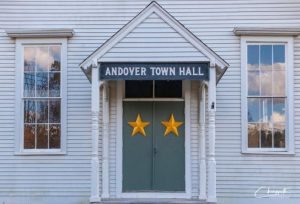
(Source: Scott Chiappetta of Chiappetta Photography)
Interesting Places and Businesses
- Visit the beautiful Hurst Family Farm and its old-fashioned country store for farm-to-table foods such as maple syrup, jams, organic produce, and other gifts.
- Enjoy tasty Italian food at the local’s favorite: Andover Pizza.
- 130 Jonathan Trumbull Hwy, (860) 742- 3663, AndoverPizza.com
Additional Information
- For more information on the rich history of Andover Connecticut, visit the Museum of Andover History in the Old Town Hall on Monument Lane!
- (860) 742-5473, Museum of Andover History
BRIEF HISTORY OF BERLIN
Berlin was first known as Pagonchawnischage, named by the Mattabasset Indians. In 1659, Sergeant Richard Beckley then purchased the land for his family from Chief Tarramuggus of the Mattabasset tribe. Soon after, more families began to move in. By 1686, a leader named Captain Richard Seymour established the first settlement of the land on Christian Lane. And in 1705, this settlement was formally recognized and renamed to the Great Swamp Society. In the middle of the 18th century, the Great Swamp Society was also known as the Yankee Peddler; people from all over the North American continent came for the area’s rich trading and industries presumably fostered by the location's unique advantage of being at the very geographic center of the state. At the time, the Great Swamp Society had multiple farms, blacksmiths, ironworks, and textile mills. In 1785, the town was finally incorporated into Connecticut and became Berlin as we know it today. In the 19th century, Berlin continued to be prosperous in its trades and industries. It had additional manufacturers in various wood products, clothing, clocks, and even books. Berlin also had a thriving inn and tavern industry, as the town was directly on the route between the state’s two major cities: Hartford and New Haven. The Berlin Railroad Depot offered a direct route between these cities and also provided a route to New York. Today, travelers can still take advantage of this train station through CT Rails’ Hartford Line. Furthermore, although Berlin is no longer known as the Yankee Peddler as it once was, its special location and unique access to highways and major routes in the state allow its commerce to continue to thrive. Additionally, Berlin is notable for having excellent recreational access. The town has almost 1,000 acres of open space, an 18-hole golf course, picnic areas, hiking trails, and tennis courts.
(Source: Town of Berlin)
Places of Interest
- Lamentation Mountain State Park
- 230 Plymouth Rd, (860) 485-0226, ctvisit.com
- Ragged Mountain Trail
- Ragged Mtn, (860) 828-7000, berlinct.gov
- Metacomet Trail
- Safari Golf
- 2340 Berlin Turnpike, (860) 828-9800, safarigolfct.com
- Berlin Batting Cages and Putter’s Paradise Mini-Golf Course
- 1801 Berlin Turnpike, (860) 828-7518, berlinbattingcages.com
- Timberlin Golf Course
- 330 Southington Rd, 860-828-3228, timberlingolf.com
Good Eats!
- Joey B’s Restaurant
- 83 Mill St, (860) 828-3922, eatatjoeybs.com
- Blue Lobster
- 376 Berlin Tpke, (860) 828-5833, bluelobsterseafood.com
- Casa Mia at The Hawthorne Fine Dining
- 2421 Berlin Tpke, (860) 357-206, casamiathehawthorne.com
- Sliders Bar and Grill
- 197 Episcopal Rd, (860) 829-9292, slidersgrillbar.com
- Seven Moons Thai Cuisine
- 128 Farmington Ave, (860) 505-7867, sevenmoons-berlinct.com
Lodgings
- Best Western Plus New England Inn and Suites
- 2253 Berlin Tpke, (860) 828-3000
- Days Inn by Wyndham
- 387 Berlin Tpke, (860) 438-6178, wyndhamhotels.com
- Twin Spruce Motel
- 697 Berlin Turnpike, (860) 828-9200
Additional
- In the fall fair season of New England, come and visit one of the biggest agricultural fairs to enjoy tasty foods, rides, and entertainment at the Berlin Fair.
- Berlin Fairgrounds, 430 Beckley Rd, 860-828-0063, berlinfair.com
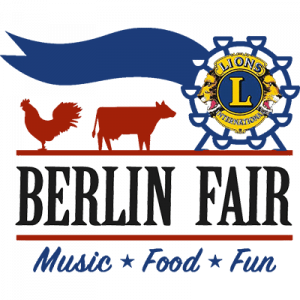
Source: Berlin Fair
BLOOMFIELD – by Dennis A. Hubbs
Photos by Dennis A. Hubbs
Bloomfield – the next town north of the capital city of Hartford, was voted an All-American city back in 1970. Today, one of its main features is its diversity, along with almost 1700 acres of parks and open space (significantly more than most all towns of comparable size), with beautiful scenery and a number of excellent hiking trails. The center has become known as somewhat of a restaurant mecca, offering everything from seafood to pizza, Japanese, Thai and Portuguese cuisine… and much more!
The town has two major golf courses available to the public – Wintonbury Hills – a Pete Dye-designed masterpiece in the scenic northwest corner of Bloomfield and the Arnold Palmer- crafted Gillette Ridge Golf Club on the campus of Cigna Insurance, to the south. Both offer highly-rated, challenging play to golfers in beautiful settings.
A ride along Simsbury Road will bring you past many historical homes, to the 120-acre Auerfarm – the country home of Beatrice Fox Auerbach of G. Fox & Company department store fame. The working farm, deeded to the 4-H Education Center in 1976, annually hosts more than 14,000 children, offering opportunities to learn about agriculture and the environment. A little-known fact is that Eleanor Roosevelt became good friends with Beatrice and often visited the farm, staying in a cottage once part of the newest state park in Connecticut – the Auerfarm State Park Scenic Reserve. This is a great spot for hiking and birdwatching, with commanding views of Hartford and the surrounding countryside. From several viewpoints, you’d have no idea that the center of town was just a few miles away!
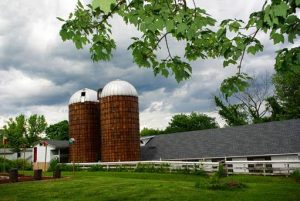
The oldest public building in town is the Old Farm School, built in 1796. The preserved brick structure, on the campus of the Wintonbury Historical Society on School Street, is open to the public on Sundays from May through October. The original bell can still be rung!
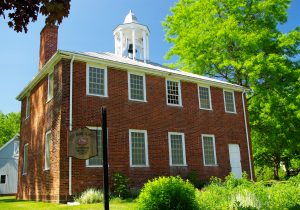
Also on School Street is Samuel Wheeler Reed Park – a preserved open-space with a gorgeous view of the Talcott Mountain ridge to the west and an awesome place to fly a kite or watch a sunset.
Four mile long Duncaster Road is officially designated “scenic” and a drive along its length will easily verify that, especially in autumn. At its southern end is Hawk Hill Farm – preserved by the Wintonbury Land Trust. This working farm boasts great hiking trails and in fact will eventually connect Filley Park in the town center to Penwood State Park – another one of Bloomfield’s scenic gems.
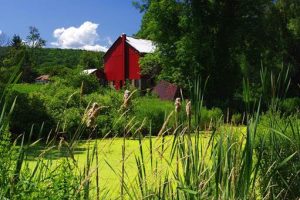
Beginning with steam-powered mobile saws way back in the late 1800’s, the Moore family still owns and operates a sawmill along Mountain Avenue, having used steam power until 1974 - as the last steam-powered sawmill in New England. Just up the road is Wade’s Farm Fresh – a fixture in Bloomfield dating back 100 years. Wade’s corn is some of the best in the area!
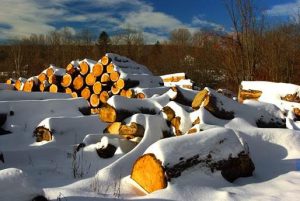
Another lesser-known gem, located in the northeastern part of town, is Farmington River Park, off Tunxis Avenue Extension. This a fantastic place to hike and explore the river and its environs. The park is still being developed and a walk down the old (now closed) road leads to a pond and river access. It’s especially lovely in fall!
Along Tunxis Avenue (Route 189) is Reservoir Three, which is adjacent to Wintonbury Hills Golf Course to the west. The area is especially beautiful during the autumn season”
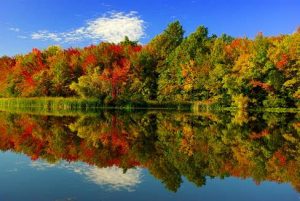
The East Coast Greenway – a 3,000-mile walking and biking trail from Florida to Maine – passes through a portion of town and will connect to the Simsbury part of the trail system soon. Connecticut hosts 200 miles of the Greenway, both on and off road. Come and explore Bloomfield – you are welcome here!
BRIEF HISTORY OF BETHANY
Before the vast puritan settling of Connecticut, both the Naugatuck Paugusset Tribe and Mattabessitt Wangunk tribe inhabited the lands where Bethany is now. However, in December of 1638, the land North of New Haven which includes parts of the present town was purchased by settlers from the Wangunk tribe to be incorporated into the city. In fact, Eastern Bethany remained a part of New Haven for the next 146 years. Additionally, Milford’s boundaries too were once overlapping those of Bethany. Even New Haven and Milford disputed their boundaries between each other over the lands up until the late 1600s to early 1700s. In 1738, a settlement in the lands of Bethany called the Amity Parish was then subdivided, and thus the Bethany Parish was incorporated. The name Bethany was chosen for its biblical significance. Decades later, in 1784, the Connecticut General Assembly incorporated both the Amity Parish and Bethany Parish Settlements into one town: Woodbridge. The Bethany Parish was a part of Woodbridge until 1832 when the Bethany Parish became incorporated into the town of Bethany. From the time it became incorporated, the town of Bethany has always been described as a small town with a rural character. Today, the town has some dairying and agriculture industries but is most notable for its open space with over 6,000 acres available for outdoor recreation.
Sources: The Bethany Historical Society
Outdoor Recreation
- Veterans Memorial Park and Hockunum Lake
- 265 Beacon Rd, (203) 393-2100, CTvisit.com
- Woodhaven Golf Course
- 275 Miller Road, (203) 393-3230, woodhavengolfct.com
Shopping and Dining
- Whitlock’s Farm Book Barn
- 20 Sperry Road, (203) 393-1240, whitlocksbookbarn.com
- Billy's Old-Fashioned Ice Cream and Marketplace
- 742 Amity Rd, (203) 691-9185, billysmarketplacect.com
- Evan’s Deli and Grocery
- 710 Amity Rd, (203) 393-9111,

- 710 Amity Rd, (203) 393-9111,
- Teddy B’s Restaurant
- 136 Amity Rd, (203) 393-1525, teddysbs.restaurant
- Country Corner Diner
- 756 Amity Rd, (203) 393-1489, countrycornerdiner.com
- PK’s
- 696 Amity Rd AB-10, (203) 393-0623, pamskitchn.com
- Apizza Grande Bethany
- 119 Amity Rd, (203) 691-8045
Additional Information
- Bethany Land Trust
- Currently 550 acres of Bethany’s open space are maintained and protected by the Bethany Land Trust Non-profit organization. To find out more about which properties they cover, visit their website!
BRIEF HISTORY OF BOLTON
The Lands of Bolton was originally the hunting grounds for the Podunk Native American Tribe who resided alongside the Podunk River in what is now East Hartford and South Windsor. The Podunk dubbed this land Saqumsteck which means land of the hard rock. When English settlers expanded throughout the state, Bolton was actually considered to be within the bounds of the Hartford township. The area was called the Mountains of Hanover to those of Hartford up until October 9th, 1720 when a couple of settlers of the area submitted a petition for the incorporation of Bolton as its own town. And thus, Bolton became incorporated as one of the oldest towns in Connecticut. The name Bolton was chosen because many of the town’s first settlers were actually from Bolton in Lancashire England. Moreover, in 1808 the northern half of Bolton separated from the township and became the town of Vernon. Currently, Bolton is characterized by being 15 miles east of Hartford and encompasses a small 15.5 square miles of land. Furthermore, Bolton may have originally been known for its early industries in distilling, grist milling, mining and cigar, and hat manufacturing, but today it is known for being a residential town, with many outdoor recreational opportunities. In fact, Bolton’s natural beauty has granted it the name “a town for all seasons”.
Source: Town of Bolton
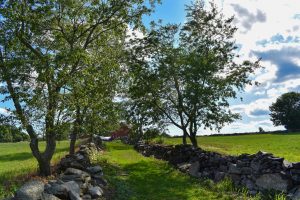
Source: Town of Bolton Facebook
Outdoor Recreation and Farms
- Herrick Park
- 29 Hebron Rd, (860) 649-8066, Town of Bolton https://town.boltonct.org/services/town-parks
- Freja Park
- Rt 44, (860) 649-8066, Town of Bolton
- Indian Notch Park and Bolton Lake
- 60 Tolland Rd, (860) 649-8066, Town of Bolton
- Bolton Notch State Park
- Jct Rt 44 and Rt 6, (860) 424-3000, Dept. of Energy and Environmental Protection
- Bolton Heritage Farm and Rose Trail
- 266 Bolton Center Rd, (860) 649-8066, Town of Bolton
- Mar-Lea Minature Golf and Driving Range
- 244 Boston Turnpike, (860) 649-7023, marleagolf.com
- Fish Family Farm Creamery and Dairy Farm
Shopping and Dining
- A-1 Food Store
- 140 West St B, (860) 643-5404
- Georgina's Restaurant & Banquets
- 275 Boston Tpke, (860) 647-0345, georginasrestaurant.com
- Jao Praya Thai Cuisine
- 299 Boston Tpke, (860) 512-0686, jaoprayathaicuisine.com
- Three J's Café
- 124 Boston Tpke, (860) 694-4684
- Parkside Pizza and Ice-Cream
- 270 West St, (860) 791-7109, parksidepizzact.com
Additional Information
- In addition to the many municipal and state-provided outdoor open spaces in Bolton, The Bolton Land Trust organization preserves and maintains 310 acres in the town. To find out more about the properties they conserve, and how to access hiking trails on their properties visit their website.
BRIEF HISTORY OF BRANFORD
In 1638 the New Haven Colony traded 12 coats of cloth to the Mattabessec Native American tribe for the land known to them as Totokett. This land became later known as Branford, as settlers from Wethersfield purchased the land from New Haven in 1644 for between 12 and 13 pounds. They choose the name Branford for their new settlement after Brentford England. Branford was originally known as a shoreline agricultural community, and in the mid, to late 1800 the town’s industries greatly diversified. In fact, Branford, specifically Stony Creek, had a large and successful mining industry. The Stony Creek quarries were established in 1858, and a few different mining companies took part in the extraction of pink granite stone. At the quarry’s largest, as many as 1,800 men were employed. Even the granite that was mined at Stony Creek was used in the construction of the Statue of Liberty’s base. It is clear that mining was an important chapter in Branford’s history. The influx of workers in the quarries encouraged the growth of the town. At the mining industry’s peak, Stony Creek had several grocers, saloons, barbershops, a blacksmith, a movie theater, a pharmacy, and an active railroad line. Of course, agricultural production was still a constant for Branford. It was reported that in the late 1800s, the town would produce 50,000 quarts of strawberries annually to be sold at Boston’s markets. Also, Branford was known to have seafood harvesting industries as the town’s sheltered waters, and freshwater streams allowed for the growth of lobsters and oysters. Additionally, Branford’s unique Thimble Islands attracted tourism. Named after Thimbleberries that once grew wild on the islands, the Thimble Islands were visited by those from New Haven and New York City as early as the 1840s. Many historic hotels, with luxurious accommodations alongside the islands granted city-goers pleasurable summer excursions. Trolley lines and ferries transported vacationers alongside, and to beaches. Today, ferries still operate around the Thimble Islands, however, no longer to the islands themselves as they are owned privately. Even so, Branford continues to be a favorable place for tourists from all over since It offers beautiful New England beaches, rich history, famous breweries, lodgings, shopping, and delicious foods.
SOURCE : Town of Branford
 (Source : Town of Branford Facebook)
(Source : Town of Branford Facebook)
Ready to Have Some Fun?
Head on down to Branford’s most infamous brewery where you can grab a brew while enjoying the Connecticut Shoreline at Stony Creek Brewing. You can even have some family fun and begin your Getaway with afternoon coffee and snack at the Stony Creek Market, overlooking the Branford Harbor and the Thimble Islands. In the summer season, take a tour of the islands and learn their fascinating stories. Be sure to drive through the streets of Stony Creek; there aren’t many of them, but they sure are charming.
Attractions
- Thimble Island Cruise
- 4 Indian Point Rd, (203) 488-8905, thimbleislandcruise.com
- Stony Creek Brewery
- 5 Indian Neck Ave, (203) 433-4545, stonycreekbeer.com
- Thimble Islands Brewing Company
- 16 Business Park Dr, (203) 208-2827, thimbleislandbrewery.com
- Stony Creek Museum
- 84 Thimble Islands Rd, (203) 488-4014, stonycreekmuseum.org
Outdoor Activities
- Branford Supply Pond Park
- 16 Short Rocks Rd, (203) 488-8304, branford-ct.gov
- Branford Trolley Trail and Foot Bridge
- West Point Rd, (203) 393-2100 ext: 127, branfordlandtrust.org
- Stony Creek Quarry Preserve
- Red Hill Rd, (203) 393-2100 ext: 127, branfordlandtrust.org
- Branford Point Beach
- Harbor St, (203) 488-8304, branford-ct.gov
- Stony Creek Beach
- Thimble Island Rd, 488-8304, branford-ct.gov
Shopping
- Splash Boutique
- 1010 Main St, (203) 488-1632, splashbranford.com
- Loved Boutique
- 847 W Main St, (866) 285-6833, lovedboutique.com
- Seaside Home and Gifts
- 172 Thimble Island Rd, 172 Thimble Island Rd, seasidehomeandgifts.com
- Taken for Granite
- Possessions
- 1074 Main St, (203) 483-1885, possesionsclothing.com
For the Foodies!
Dining
- Stony Creek Market
- 178 Thimble Islands Rd, (203) 488-0145, stonycreekmarket.com
- Café Fiore
- 420 E Main St, (203) 208-4690, cafefiorebranford.com
- Home Restaurant
- 1114 Main St, (203) 483-5896, homerestaurantct.com
- Le Petit Café
- 225 Montowese St, (203) 483-9791, lepetitcafe.net
- Lennys Indian Head Inn
- 205 S Montowese St, (203) 488-1500, lennysnow.com
- USS Chowder Pot III
- 560 E Main St, (203) 481- 2356, chowderpot.com
- Tommy Sullivan’s Café
- 240 N Main St, (203) 488-8454
- Marco Pizzeria
- 313 E Main St, (203) 483-1544, marcopizzeria.com
- Jalapeño Heaven
- 40 N Main St, (203) 481-6759, jalepeno-heaven.com
- Eli’s
- 624 W Main St, (203) 488-2700, elisrg.com
- 9 East Hibachi and Asian Kitchen
- 310 E Main St, (203) 315-8111, 9eastbranford.com
- Takumi Sushi, Ramen and Lounge
- 906 W Main St, (203) 208-1207, takumibranford.online
Sweet Treats and Cafés
- Willoughby’s Coffee and Tea
- 550 East Main St, (203) 481-1700, willoughbyscoffee.com
- Common Grounds
- 1096 Main St, (203) 488-2326, commongounds.com
- Ashley’s Ice Cream
- 1016 Main St, (203) 481-5558, ashleyicecream.net
- Sweets on Main
- 1044 Main St #3732, (203) 208-0317, sweetsonmain.com
- Donut Crazy
- 972 W Main St, (203) 208-0529, donutcrazy.com
- Love Bakery and Cafe
- 4 Brushy Plain Rd, (203) 208-2353, lovebakeryandcafe.com
Stay a While!
Inns and Lodgings
- Owenego Inn
- 40 Linden Ave, (203) 488-3805, owenego.com
- Thimble Islands Bed and Breakfast
- 28 West Point Rd, (203) 488-3693, thimbleislandsbb.com
- The Kelsey House Bed and Breakfast
- 2 Paynes Point, (203) 481-5207, kelseyhousebb.com
- Baymont by Wyndham Branford
- 3 Business Park Dr, (203) 871-3929
- Holiday Inn Express
- 309 E Main St, (203) 488-4035
- Rodeway Inn and Suites
- 81 Leetes Island Rd, (203) 481-2528
More Branford Charm
James Blackstone Memorial Library
- This Branford Public Library has a historic character. Built in 1896 by Timothy Beach Blackstone in honor of his father and longtime Branford resident, James Blackstone, this architectural wonder is made of almost exclusively fine Tennessee Marble.
- 758 Main St, (203) 488-1441, blackstonelibrary.org
Branford Historical Society
- Branford Historical Society helps to preserve Branford’s architectural history and provides education on the area’s rich past.
- (203) 488-4828, branfordhistoricalsociety.org
Branford Land Trust
- The Branford Land Trust organization has been actively protecting and maintaining Branford’s natural beauty and open space for the past 50 years. Today they own more than 1,000 acres and provide access to beautiful hiking trails.
- (203) 483-5263, branfordlandtrust.org
BRIEF HISTORY OF CANTON
Drawn in by its fertile hills and prospects of successful farming, settlers first came to the land of what is now known as Canton in 1737. Originally a part of Simsbury in Western Hartford County, and nestled amongst the Farmington River, Canton was officially incorporated as a town in 1806. Alongside being a farming community, the area’s first industries were in manufacturing resin, pitch, and turpentine, in addition to sawmilling, and grist milling. Canton’s most notable industry was in tool manufacturing accredited to Collins Axe Company. This world-renowned company was founded in 1826 by young entrepreneurs Samuel Watkinson Collins, his brother David and their cousin William Wells. In fact, Collins Axe Company was so large, it had its own village called Collinsville. This village provided employees of the manufacturer with housing, a few stores, a bank, a church, and access to the railroad. And even though Collins Axe Company closed in the 1960s, Collinsville’s innovative historical charm, dining, arts, and commerce still actively contribute to Canton’s economy. Locals describe Canton as a small town where their kids are safe to roam free and neighbors look out for one another. Furthermore, its location alongside the Farmington River makes it a place where visitors can take advantage of many outdoor recreational opportunities. Visitors may hike alongside the scenic river trail and even enjoy a peaceful kayak ride on the river itself!
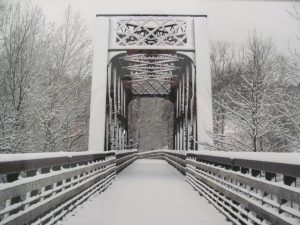
Source: Town of Canton & Connecticut History
Outdoor Recreation
-
Collinsville Canoe and Kayak
- 41 Bridge St, Collinsville, 860-693-6977, collinsvillecanoe.com
- Farmington River Trail
- Matterhorn Mini Golf
- 10 Dyer Cemetery Rd, 860-795-0234, matterhornminigolf.com
Unique Gifts and Antique Shops
- Antiques on the Farmington
- 10 Depot St, 860-693-0615, antiquesonthefarmington.com
- Swank Pearce Antiques and Décor
- 163 Albany Tpke #600, 860-352-2433, swankpearceantiques.com
- Unique Antiques of Connecticut
- 167 Albany Tpke, 860-400-2356, uniqueatiquesct.com
- The Junk Shop
- 181 Albany Tpke, 860-693-6039
- The Findery
Dining
Burger and Fry Joints
- Jefferson Fry Company
- 110 Albany Tpke, 860-352-2801, jeffersonfryco.com
- Dish N Dat
- 144 Albany Tpke, 860-693-4927, dishndat
- Burger Shack
- 228 Albany Tpke, 860-693-0701, https://www.beausburgershack.com/
Cafés, Breakfast and Lunch
- Lasalle Market and Deli
- 104 Main St, Collinsville, 860-693-8010, lasallemarket.com
- Little Oak Café
- 220 Albany Tpke, Building 10, 860-352-2765, littleoakcafe.com
- Toasted OAT
- 50 Albany Tpke, 860-352-2818 , toastedoat
- Giv Coffee Café
- 194 Albany Tpke, 860-766-0023, givcoffee.com
Favorite Dinner Spots
- Saybrook Fish House
- 460 Albany Tpke, 860-693-0034, saybrookfishhousecanton.com
- Joe Pizza
- 140 Albany Tpke, 860-693-1265, joepizza.com
- Grindstone Tavern
- 3 River St, 860-352-2056, grindstonetavern.com
- Lisa’s Crown and Hammer Resteraunt and Pub
- 3 Depot St Collinsville, 860-693-9199, crownandhammer.com
- Green Papaya Restaurant
- 160 Albany Tpke, 860-693-9322, greenpapayaresteraunt.com
Lodging
- Hillside Motel
- 671 Albany Tpke, 860-693-4951, hillsidemotel44.com
Additional Places to Explore in Canton!
- The Shops at Farmington Valley
- This outdoor mall located conveniently of the Albany Tpke is the place to go for all your shopping needs!
- 110 Albany Turnpike, 860-693-3059 , theshopsatfarmingtonvalley.com
- Canton Historical Museum
- For more historical information about Canton and to see some unique town artifacts, visit the Canton Historical Museum
- 11 Front St, 860-693-2793, cantonmuseam.org
- Canton Land Conservation Trust
- For fifty years the Canton Land Conservation Trust has been protecting the town’s land for the preservation of open space. Additionally, their organization provides access to and maintains hiking trails for visitors. A list and map of all of their hiking trails is conveniently located on their website.
- Roaring Brook Nature Center
- The Roaring Brook Nature Center offers outdoor educational opportunities about local wildlife all ages through their programming and exhibits.
- 70 Gracey Road, 860-693-0623, roaringbrooknaturecenter.org
- Gallery on the Green
- This gallery is recognized as Connecticut’s oldest running artists guild. For over 50 years this gallery has been a place where artists can exhibit and sell their creative works.
- 5 Canton Rd, 860-693-4102, galleryonthegreen.org
Cheshire was the granddaughter of New Haven, and Wallingford was its mother town. West of Wallingford and beyond the stream Quinnipiac was a low range of “Blew (Blue) Hills,” and at their base a fine stretch of land known s early as 1680 as “Ye Fresh Meadows.” The region was one of promise to the farmer and soon the more venturesome of the colonists’ sons were going over there to clear the land and plant crops. By 1694 there was an organized settlement here, the beginnings of our present town of Cheshire. In 1705, Thomas Brooks named this area Cheshire after the county of his birth in England. The Brooks family descendants still live in Brooksvale in the southern part of Cheshire today.
In 1780 the State Legislature made Cheshire a separate town. It’s population at this time was 2,015. In 1801, our main street became part of turnpike with stagecoaches running from New Haven to Hartford through Farmington making stops in Cheshire three days a week around five o’clock in the afternoon. In 1827 the Farmington Canal was operating. This canal was the first link in the planned system of waterways to connect the Connecticut River in North Hampton with Long Island Sound in New Haven, opening western New England to the world of trade. Beachport was Cheshire’s main stop on the Canal. In 1848 the Canal was superseded by the railroad, which because it was built mostly along the old towpath of the Canal was called the Canal Line.
Cheshire had many small industries. James Mix had a gimlet and hardware factory in what is now known as the Mixville section of Cheshire. On our eastern border, Cheshire Street had many small flourishing enterprises, including the successful Hough Mill utilizing the current of the Quinnipiac River. Farming was the greatest of Cheshire’s industries from the beginning, one generation after another often carrying along on the same site, as the Bishop Family had done, five generations of farming the same land. To this day, other farmers continue this tradition. John Carmody’s family owned and run farm on the north end of Peck Lane has been operational for nearly 100 years. The Arisco Family is another operational farm. Kurtz Farm, a wholesaler of bedding plants, was established in the early 1940s and created the moniker of Cheshire being the Bedding Plant Capitol of Connecticut.
Cheshire had a boom of mining, starting with the claim of John Parker in 1712 that he had found copper deposits on his farm. Copper Valley is another Cheshire neighborhood. In 1840s, an African American woman known only as Jinny discovered a white stone on a hillside near her cabin. Professor Benjamin Silliman of Yale determined this was barium sulphate, popularly known as Barytes. This mineral found a ready market with manufacturers of glass, paint, cloth, and certain rubber products. Many miners came to Cheshire from Cornwall England. In 1919, a reported discovery of oil was made on the Peck Farm in the northwestern part of town. Nothing came of the project but hope was great our town would have oil resources.
In the 1850s, the Cheshire Manufacturing Company was established, producing ivory combs and buttons of all kinds. This became the Ball and Socket Company and was in operation into the 1980s. Today this site is being repurposed as the Cheshire Ball & Socket Arts center.
Cheshire has supplied the world with its quota of notables, an early one being the eccentric, pioneering educator, Bronson Alcott. Alcott was in Cheshire for a short time as a boy, with his uncle, who was a headmaster at the notable Cheshire Academy (founded in 1794), and later as a teacher in a school of his own from 1825-1826.
When Yale students sought to make their school co-educational, Cheshire’s Lucinda Foot was given her due. In 1784, the twelve-year old Lucinda Foot passed the Yale entrance examinations. She was not admitted because of her sex. Her brother Samuel was admitted and graduated from Yale at age 17. Samuel Foote later became a Congressman, a Senator, and finally Governor of Connecticut. His son, Admiral Andrew Hull Foote of Mississippi River fame in the Civil War, lived in Cheshire as a boy and attended Cheshire Academy, along with the Union Secretary of the Navy, Gideon Welles, and the Confederate General Joseph Wheeler.
Lambert Hitchcock, famous for his Hitchcock chair, was born in Cheshire. John Frederick Kensett, Hudson Valley School, was known for his landscapes and marine paintings. In 1859 Kensett was appointed a member of the National Arts Commission. His Niagara Falls painting is on display in the Red Room at the White House, chosen by Mrs. John F. Kennedy for the White House Collection.
Other Cheshire notables include Amos Doolittle, 18th century engraver; Abraham Jarvis, second Bishop of Connecticut and eighth Bishop of the Episcopal church in America; and George Capewell, who made a fortune from his inventions, among these horseshoe nails.
BRIEF HISTORY OF CHESTER
In the early to mid-1600s, The land that is now known as Chester was once the Pataconk section of Saybrook. Pataconk meaning wigwam-shaped hill in the Wangum’s native language. Early Saybrook property owners of this land likely were not settled on it and just used it for farming. In fact, the first recorded settling in 1692 by Jonah Dibble, and he lived amongst Wangum Native Americans. Later more settlers followed. The Wangums lived alongside the first few white settlers in this area until 1785. The last Wangum remains of Pataconk are buried in Chester’s Old Burying Grounds. Pataconk was then eventually named Chester by early settler Abraham Waterhouse, after Chester England where his ancestors were from. Shortly after, Chester separated from Saybrook and became incorporated in 1836. In the 1800s, Chester was a bustling town. Steamboats connected Chester with Hartford and New York City. And, even an active railroad track spanned through the town! The earliest industries of Chester included gristmills, tanneries, and forges. Later, manufacturing became prominent in the town due to its location on the river to access water power and transportation. These prominent factories include CJ Bates and Sons, M.S. Brooks and Sons, J.S. Deuse Inc., Russell Jennings Co, and the Middlesex Handle Co. Today, Chester isn’t known for its industries as it once was, but it still continues to be full of life. It’s a popular place to visit in central Connecticut as its charming downtown full of historical buildings has many galleries, small store-fronts, and renowned eateries!
Source: Town of Chester
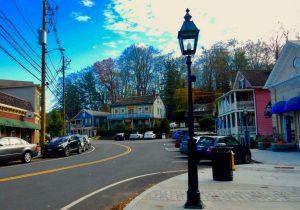
Source: Town of Chester Facebook
Outdoor Recreation and Fun!
Chakana Sky Alpacas
- 36A Turkey Hill Rd, 860-204-1646, https://www.chakanaskyalpacas.com/
Pattaconk Lake and Cockaponset State Forest
- State Forest Rd., (860) 345-8521, https://portal.ct.gov/DEEP/State-Parks/Forests/Cockaponset-State-Forest/Contact
Cedar Lake
- 218 West Main St., 860-526-0013, http://chesterct.org/town-government/parks-recreation-commission/
Camp Hazen YMCA
- 204 West Main St., 860-526-9529, https://camphazenymca.org/
Shopping
Lori Warner Studio/Gallery and Swoon Boutique
- 21 Main St, 860-322-4265, https://www.loriwarner.com/
C & G Unparalleled Apparel
- 3 N Main St, 860-526-3284, https://www.cummings-good.com/
Lark
- 4 Water St., 860-322-4256, https://shopatlark.com/
Blackkat Leather
- 36 Main St, 860-526-2300, https://www.blackkatleather.com/
R.J. Vickers Herbery
- 26 Water St, 860-526-4061, https://www.rjvickersherbery.com/
Eateries
Grano Arso
- 6 Main St, 860-322-3143, https://www.granoct.com/
River Tavern
- 23 Main St, 860-526-9417, http://www.rivertavernrestaurant.com/
Honeycone Craft Ice Cream
- 29 Main St, 860-322-3132, https://www.honeyconecreamco.com/
Marker 37
- 72 Railroad Ave, 860-579-3737, https://www.markerthirtyseven.com/
Moravela’s
- 139 Middlesex Tpke, 860-526-3633, https://www.moravelaspizzact.com/
OTTO Pizza
- 69 Main St, 860-526-9445, http://www.ottochester.com/
Rustica
- 189 Middlesex Ave, 860-526-9021, http://www.rusticact.com/
Simon’s Marketplace
- 17 Main St, 860-526-8984, https://www.facebook.com/Simons-Marketplace-51921532018/
Thai Riverside
- 4 Water St, 860-322-4545, http://www.thai-riverside.com/
The Pattaconk 1850
- 33 Main St., 860-525-8143, http://pattaconk1850.com/
The Villager
- 13 Main St., 860-322-3114, https://www.facebook.com/Thevillageron13main/
The Village Bistro
- 59 Main St., 860-322-3933, https://www.villagebistroct.com/
The Wheatmarket
- 4 Water St., 860-526-9347, https://m.facebook.com/profile.php?id=100057449949800
Additional Places to Explore!
Chester-Hadlyme Ferry
- Rt. 148, 860-594-2850, https://portal.ct.gov/DOT/Traveler/ferries/Chester-Hadlyme-Ferry
Little House Brewing Co.
- 16 Main St, 860-322-4153, https://www.littlehousebrewing.com/
Chester Museum at the Mill/Chester Historical Society
- 9 West Main St., 860-526-5781, http://chesterhistoricalsociety.org/visiting-the-museum
Chasing Squirrels Historical Walking Trail of Chester
- https://www.visitchesterct.com/chasing-squirrels
Durham (Coginchaug as it was first known) was settled in 1699. The name was changed to Durham in 1704 and the town was incorporated in 1708.
Durham is the birthplace of Moses Austin (1761) who drew up the plan for the settlement of Texas that was carried out by his son Stephen after Moses’ death. So, it can be said that Durham is the birthplace of Texas. The home he was born in is at 256 Main Street and is currently a private residence.
Much of Main Street is a designated Historic District and includes numerous historic buildings.
Included in the District is the Old Cemetery which dates back to the 1700s. Also, a colonial bridge has been preserved under the current Route 17 bridge near Old Cemetery Road.
Durham is best known as the home of the Durham Fair, Connecticut’s largest agricultural fair.
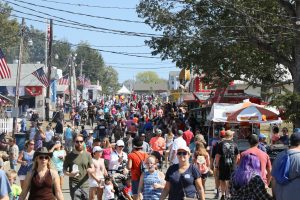
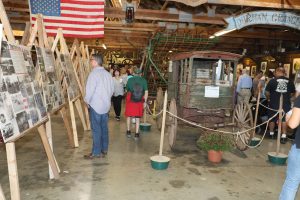
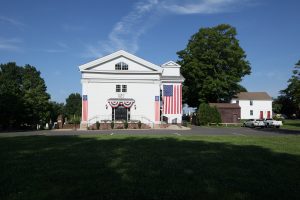
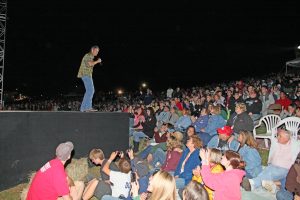
"Every Town Has a Story" - from Deb Mathiasen, Town Tourism Representative
WELCOME - East Haddam offers visitors the opportunity to explore history, art, and natural beauty in scenic New England. The narrative below offers a glimpse into just a few of the numerous ATTRACTIONS and RECREATION available in our Town.
RIVERFRONT HISTORY
The fortunes of East Haddam have always been tied to the Connecticut River. The village area contains both the Upper Landing (along Main Street) and the Lower Landing (near the Goodspeed Opera House). The Lower Landing became commonly known as Goodspeed Landing in the 19th Century when it was the center of William Henry Goodspeed's booming businesses. He is most known for the Goodspeed Opera House, which he opened to theatergoers in 1877 and is in operation today. A drive through East Haddam Village displays beautifully maintained historic homes and businesses, many with views of the Connecticut River. Also, visit the Nathan Hale School House and oldest bell in America, housed in the belfry of St. Stephen's Episcopal Church.
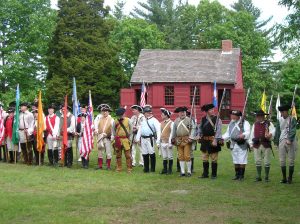
THE HISTORY OF AGRICULTURE, INDUSTRY, AND TOURISM
The Connecticut River brought settlers and commerce to the area. Historic homes, old stone walls, post and beam barns and early American buildings are a testament to the early life of a trading and farming town. The First Church of Christ, Congregational on Town Street is America's Oldest Federal Meetinghouse. The Venture Smith gravesite, a Freedom Trail stop, is at the First Church cemetery. Within East Haddam, the Village of Moodus was the site of a dozen water-powered textile mills during the 19th century and home to the eastern European immigrants who worked them. Later, people seeking refuge from city life flocked to the many summer resorts. The East Haddam Historical Society & Museum features period clothing, photos, and exhibits celebrating the unique past of East Haddam.
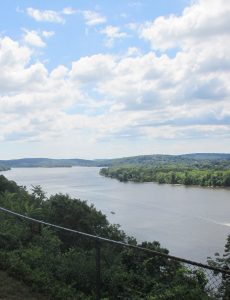
CELEBRATIONS AND ARTS
East Haddam Village is home to the non-profit foundation, Goodspeed Musicals and the Goodspeed Opera House which produces nationally acclaimed musicals. Over 100 employees, a 400-seat theater, scene shop, rehearsal studio and extensive musical library are all within walking distance. Hear the singing in the streets as actors stroll to and from rehearsals or performances. "Music on the River" brings numerous musical groups to the Goodspeed Green along the Connecticut River once a week in July and August. Hundreds of East Haddam residents and neighbors come to hear music on the lawn and enjoy picnic dinners or food provided by the local restaurants. In the fall, experience the foliage and the "Thunder in the Valley" Drum and Fife Parade and Muster sponsored by the Moodus Drum and Fife Corps. With the winter chill, there is eagle viewing along the Connecticut River. We invite you to visit our Community Calendar for specific dates and events planned throughout the year and our Business Directory for a full listing of galleries and shops.
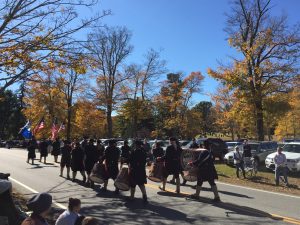
NATURAL BEAUTY
East Haddam inhabits 56.6 square miles of rolling countryside dotted with old farmsteads, lakes, handsome state parks and quaint neighborhoods. East Haddam is home to the headwaters of the Eight mile River, which runs through a greenway of protected open space. The Devil's Hopyard State Park surrounds the Eight mile River as it tumbles over a rushing waterfall and through a hemlock gorge. Along the banks of the Connecticut River standing 200 feet above, visit Gillette Castle State Park, home of William Gillette. Both are relaxing venues for a picnic or hike. The Salmon River borders the town to the North and is a site of a state project to restore anadromous fish to the Connecticut River tributaries. A state operated boat launching facility allows Connecticut River access at the mouth of Salmon Cove. Three lakes, Bashan, Moodus Reservoir, and Lake Hayward provide recreation and scenic beauty to all who visit. Explore the hillside and listen for the famed "Moodus Noises" - the strange audible rumblings that are seismic in origin and figure prominently in native American lore. You are welcome to share the views of our undisturbed woodlands, miles of dirt roads, and numerous pastures. Take time to relax and enjoy your "get-away" in a location that the Nature Conservancy calls "One of the last great places."
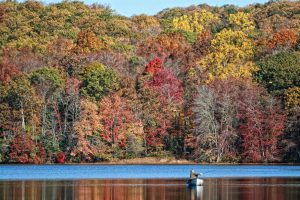
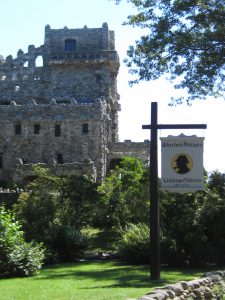
"Every Town Has a Story" - from Barbara Moore, Town Tourism Representative
LAKE POCOTOPAUG… Early in the 19th Century, the development of waterfront cottages, hotels and summer rentals began bringing tourism to the Town of East Hampton. Development continued in the early part of the 20th century with the expansion of hotels and casinos along the shores of the lake. Today Lake Pocotopaug supports a thriving residential lakefront community committed to providing fun and recreation through environmental responsible programming.
According to local legend, some time long before the area was settled, the tribe living on the shores of the lake felt they were being cursed by their great spirit. The main chief agreed to sacrifice his daughter, who willingly threw herself into the lake at Markham’s Cove and drowned. This story has been repeated by many and will always be a legend.
The lake is especially noted for two islands in the center. Lakeside attractions include the Sears Park Pavillion, swimming and fishing, and opportunities for family picnics and outings.
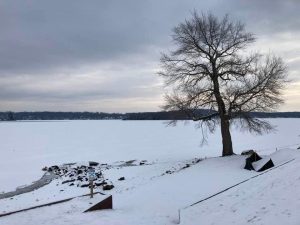
AIRLINE TRAIL… East Hampton and Hebron are included in the south section of the trail, which is 22 miles long. This section is highlighted by two viaducts, but nearly every increment offers locally favorite locations as the trail passes over streams and through state forests. Today’s conditions vary from compacted earth to crushed rock to gravel and stone dust.
As surface improvements are being made, the sections of the Air Line Trail are becoming one of the best greenways in all of Connecticut.
BEVIN BELLS… This manufacturing company has been crafting high-quality , authentic bells since 1832. Devoted to the art and science of producing exceptional bells with a brilliant sound, the Bevin family still oversees all operations in East Hampton. Each bell that is made is backed by two centuries of experience, quality and trust, in addition to a 100% satisfaction guarantee.
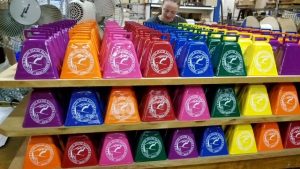
They have become important as COVID spread throughout our area in 2020. At 7PM, families from all areas of town would ring their bells to let others know that they were doing well. This communication served as a form of comfort and reassurance.
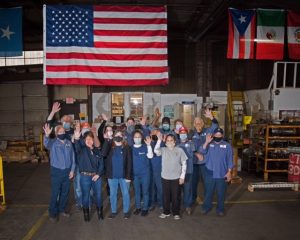
VILLAGE CENTER… the business center in East Hampton is a mix of old and new. The East Hampton Public Library and East Hampton Senior Center provides a special place for research, reading, senior projects and children’s programs. Decades ago the Village Center was identified as an area to focus on as its business and civic hub. This commitment has created a vibrant town center. The Economic Development Commission has supported this revitalization as it continues to grow.
East Hampton is centrally located so that residents and visitors can enjoy the Airline Trail, Hurd State Park, Comstock Covered Bridge, and Salmon River State Forest. The stories and the history of these special areas can be researched at the East Hampton Public Library and the East Hampton Historical Society.
Incorporated in 1768, today East Windsor strives to preserve its quiet, small-town charm in Northern Connecticut. East Windsor attracted settlers with its fertile soil for growing corn, oats, hay, and other crops. Its strategic location on the State’s main river also made it a key transfer station for goods moving between north and south. Small industry, such as textile and grist mills, grew up on its waterways, and by the 1900s shade tobacco became a dominant crop. The town has five sections Warehouse Point, Broad Brook, Scantic, Melrose, and Windsorville. East Windsor relies on its citizens to maintain this character, whether they volunteer, join a local club or serve on a Town board. The largest attraction in East Windsor is The Connecticut Trolley Museum which was incorporated in 1940. The trolley ride that visitors enjoy during their visit follows the path of the Hartford & Springfield Street Railway's Rockville Branch. The Hartford & Springfield Street Railway was a relatively high-speed interurban electric railway system running between the namesake cities that started operation in 1901 with the merger of a few smaller street railway companies. The system was made up of some forty miles of track, connecting the local street railway systems of Hartford and Springfield with branches extending from Thompsonville to Somers and Warehouse Point to Rockville (built in 1902 and 1906 respectively). Patrons can also enjoy the Visitor Center which is packed with vintage trolleys and hands-on exhibits. On the same property as the Connecticut Trolley Museum is the Fire Truck Museum & Connecticut Motor Coach Museum organized in 1968 and later incorporated in 1971. The organization is dedicated to the preservation and appreciation of antique fire apparatus and associated equipment. Another highlight of East Windsor is Skylark Airpark, home of the Experimental Aircraft Association Chapter 1310. There are many restaurants in East Windsor including Sophia’s Italian Restaurant that opened its doors in 1983. Sofia's Italian Restaurant offers everything from Pizzas to Pasta Dishes, Seafood, Prime Rib, Grinders and Club Sandwiches just to name a few. Prepared with only the finest ingredients, one taste of their marinara sauce and you'll fall in love! After lunch you can head over to Problem Solved Brewing Company for homemade local beer. Beer available to drink on site as well as to-go growlers or crowlers. BYO Food and Family friendly. If you’re looking for the perfect coffee head over to Baker & the Brew. Not only do they serve coffee but also serve breakfast and lunch with the best soups and salads in the area! There are two hotels in East Windsor, Comfort Inn & Baymont by Wyndham.
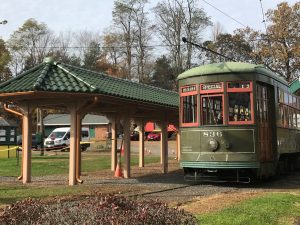
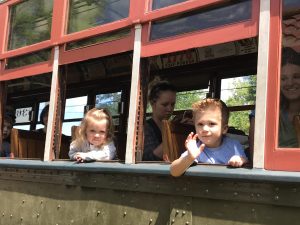
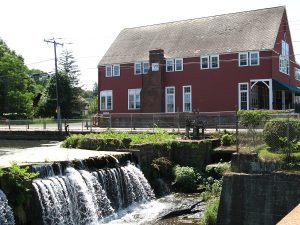
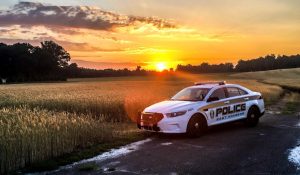
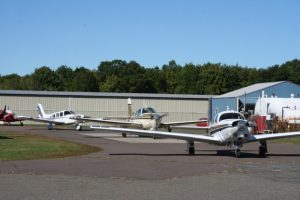
The Town of Farmington is located in the heart of the Farmington Valley. With a population of 25,000, it has a robust business community with 2000 businesses and over 30,000 people commuting daily to work in Farmington. Farmington offers a unique suburban living environment that boast urban accessibility with rural surrounds. With its proximity to highways, airports, major cities and the best that New England has to offer, Farmington feels like a world away in the middle of it all. With its historical charm, cultural amenities, and outdoor attractions, Farmington offers both residents and visitors the opportunity to explore. From bicycling, fly fishing, and cross-country skiing to art exhibits, historical tours, polo matches and live music, there’s truly something for everyone. Here is just a glimpse of what separates Farmington from the rest. To discover all Farmington has to offer visit Explore Farmington, where you’ll find local guides, event listings and local blogs.
Interesting Places
Extensive System of Trails. Information and maps, GPS coordinates, and parking.
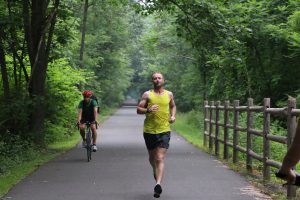
Farmington and Pequabuck Rivers. Provide a habitat for wildlife and many aesthetic and recreational opportunities including canoeing, fishing, kayaking, and swimming, with three handicapped accessible trails to the Farmington River Fishing Piers.
Farmington Historical Society. Featuring exhibits, lectures, events, and tours of the Freedom Trail’s Underground Railroad and Amistad sites.
Farmington Polo Club. The Farmington Polo Club is a historic equine facility offering Hunter / Jumper and Polo disciplines. Exhibition Polo Matches are held every Saturday from June – September.

Farmington River. There are many ways to enjoy the beauty and passive recreational opportunities the Farmington River offers, here in Farmington. There are hiking trails that allow for beautiful river views, bird-watching spots, wildflower and tree identification, and the discovery of historical landmarks. There are also river access points, for boating/kayaking, fishing, tubing, or swimming.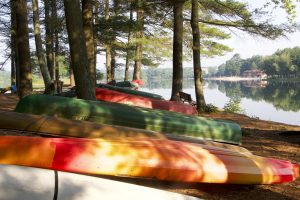
Hill-Stead Museum. A National Historic Landmark on a 152-acre estate; complete with a 1901 Colonial Revival house and landmark Impressionist art. It offers tours and an array of programs.
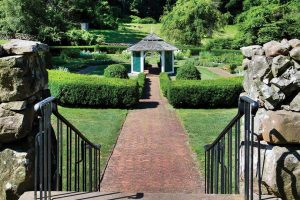
Historic walks. Includes Farmington’s freedom trail throughout Farmington, and the Farmington Historic Home Tour.
Lewis-Walpole Library of Yale University. Research center for 18th-century studies and an essential resource for the study of Horace Walpole and Strawberry Hill. Its collections include important holdings of 18th-century British prints, drawings, manuscripts, rare books, paintings, and decorative arts. Open only to scholars, by appointment.
Stanley-Whitman House (1720). Historic house museum with historic gardens, an educational building, many colonial programs and on the National Register of Historic Places.
Suburban Park. Historic landmark in the center of Unionville; containing 20.5 acres of open space with 2 miles of hilly walking trails, containing five circular “kettles” formed during the glacial age and the remnants of an “electrical" amusement park
Tunxis Country Club. The largest golf Complex in New England, with 45 holes, 7 bars, 2 beautiful venues, golf shop, driving range and the Tavern Restaurant.
Unionville Museum. Features thematic exhibits, a gem of a former small Carnegie Library, on the National Register of Historic Places.
WestFarms Mall. Anchored by Nordstrom, Macy's, and JCPenney, Westfarms is a premiere shopping center in CT, offering a unique mix of stores and restaurants.
Westwoods Golf Course. Designed by Geoffrey S. Cornish, it is an 18-hole, 4,407-yard, par-61 country setting golf course
Winding Trails: Winding Trails is a unique nonprofit organization that exists on a beautiful 380-acre parcel of land with pristine woods, clear waterways, and outstanding facilities. In the winter, Winding Trails turns into a virtual winter wonderland with activities such as cross-country skiing, snowshoeing, ice skating, and sledding.
Town of Guilford CT
Guilford, settled in 1639, is a charming town rich in history, with lots to offer the modern day visitor.
Guilford is known for its Town Green, which has been voted “Best in New England”. With the feel of an Old New England village, the Green is a hub of activity, playing host to distinctive shopping and dining experiences, galleries, historic sightseeing, and numerous family friendly events and activities. Bustling Route One also offers our guests many varied attractions.
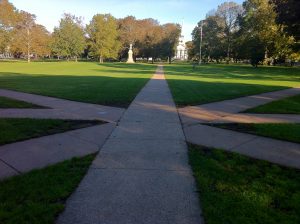
Guilford is blessed with nature’s treasures; including the seashore, lakes, rivers, forests, hills, and granite ledges. You can spend time boating, hiking, biking, fishing, swimming or simply relaxing outdoors. The Guilford Lakes Golf Course offers golfers the opportunity to play a round of golf on one of the top-rated executive par 3 courses in New England.

Guilford’s over 800 historical homes feature a diversity of architectural styles. Many of these homes surround our Town Green and can be viewed while on a leisurely stroll, or by a guided Segway tour. There are five historic house museums open to the public; including the Henry Whitfield State Museum, the Hyland House, the Thomas Griswold House, the Medad Stone Tavern and the Dudley Farm. The Henry Whitfield Museum has the distinction of being the oldest stone home in New England, having been built in 1639. Each of these houses plays host to unique activities throughout the year.
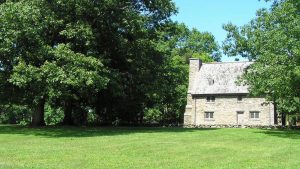
Outdoor enthusiasts of all ages and abilities will enjoy our parks and thousands of acres of hiking trails in Westwoods, Timberlands, Bluff Head and the East River Preserve. The terminus for the New England Trail is within Chittenden Park and extends over 200 miles through Connecticut and into Massachusetts. Bittner Park also has hiking trails, playing fields, bike and skateboard areas, and a recently added disc golf course. Nut Plains Park houses a very popular dog park, built and maintained by local dog enthusiasts.

Guilford’s picturesque marina area is popular with photographers, painters and sketch artists. The Red Shack on Grass Island and Faulkner’s Island Lighthouse are notable landmarks that can be viewed from the marina. It is a popular spot to capture the sunrises and sunsets, along with the boats coming in and out of the harbor. Grass Island Cruises offers scenic boat tours aboard the Charly Moore, or you can enjoy the water views while dining at one of the restaurants at the marina. Nearby Jacob’s Beach features salt water swimming, kayaking, picnicking and a playground. If you prefer fresh water, travel Route 77, a designated scenic roadway, to Lake Quonnipaug in North Guilford, an ideal spot for swimming, fishing and boating.
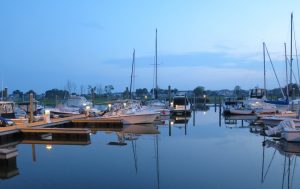
Throughout the year, the Green is host to events such as the Art Center Craft Expo, Little Folks Fair, Boy Scouts Strawberry Social, Chamber of Commerce “Taste of the Shoreline”, Community Picnic, Holiday Tree Lighting, and concerts, parades, and road races. The Guilford Agricultural Fair, Rotary “Lobsterfest”, and town fireworks are among the events hosted at the nearby Fairgrounds.
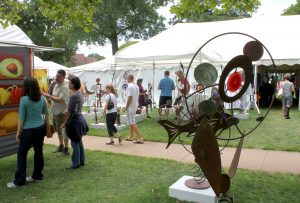
A major destination in the region, Bishop’s Orchards Farm Market & Winery in Guilford offers seasonal “pick-your-own” fruits, wine tastings, and fun, family-friendly events. Round out a visit to Guilford by visiting our unique shops and restaurants, and stay the night in a locally owned and operated B & B, hotel, or nationally branded motel. Guilford offers something for everyone, young and old alike. Conveniently located on I-95 between New York, Boston and close to nearby casinos, we would love to welcome you to our gem on the shoreline, where you can discover a piece of Connecticut history!
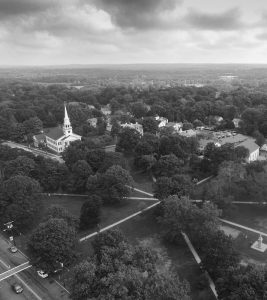
Photos by: Andy Hart
Hartford
Hartford has it. You’ve heard this before, but you may be wondering: What does it have?” It doesn’t take much to realize that Hartford is more than just Connecticut’s Capital City. Hartford offers a little something for everyone if you just look. History, arts and culture, cuisine from around the country and world, and the chance to be a part of something new in one of the oldest cities in the state.
Hartford offers a little something for every type of traveler. If you’re looking for the history of the city or if you’re one of the many people who come here looking for information about their Founder-family members, Hartford has it. Visit Connecticut’s Old State House to step back to 1796 and explore how Connecticut and Hartford have grown over the last 300+ years. Explore the archives of the Hartford History Center, the Connecticut State Library, or the Connecticut Historical Society to learn more about the people who settled here and where we all connect today. Learn more about these people in the quiet solitude of the Ancient Burying Ground, the oldest remaining historic site in the city. Wander the exhibits of the Museum of Connecticut History, featuring the Hall of Governors and the documents that were the foundation of the Connecticut we know today. The Connecticut Science Center has great exhibits for children.
For the traveler in search of arts and culture, Hartford has it. Walking along Main Street, you’ll come across the patchwork castle that is the Wadsworth Atheneum and its collection of nearly 50,000 pieces from around the world and across time. If fine arts aren’t what you’re looking for, you can head over to Nook Farm, the former home of Hartford’s intellectual community. While there, visit the Harriet Beecher Stowe Center and The Mark Twain House and Museum.
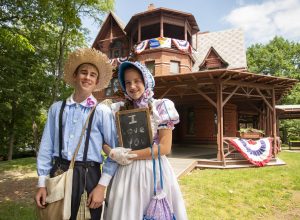
Within the walls of these homes, some of the most influential writings in the United States were penned-- changing our culture and making a mark. When the sun goes down, take in a show at the Tony Award winning Hartford Stage, the birthplace of shows such as Anastasia and A Gentlemen’s Guide to Love and Murder. If contemporary theater is what you’re after, consider a show at the newly renovated TheaterWorks. And if you just want to laugh, look no further than Sea Tea Improv. If you want music, head to Infinity Music Hall.
Hartford has some other ways to entertain. Throughout the spring and summer, head to Dunkin Donuts Park to watch the Hartford Yard Goats sweep the bases or cheer on Hartford Athletic (Connecticut’s only professional soccer team) at Dillon Stadium.
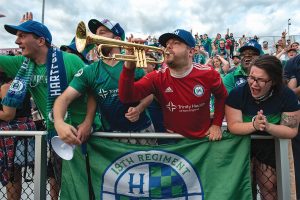
Hartford is also home to two public golf courses in Keney Park or Goodwin Park.
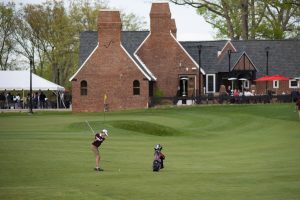
Enjoy the Connecticut River at Riverfront Recapture’s events and programs.

They are also many diverse, cultural festivals and parades.

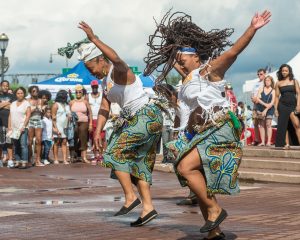
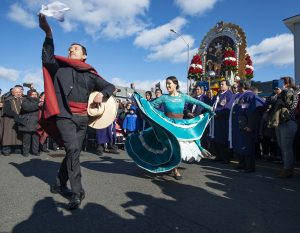
If it is too cold for the fields, head indoors for the fall and winter to watch the Hartford Wolf Pack play under the banners of the old Hartford Whalers at the XL Center. Also watch University of Connecticut ice hockey and basketball teams compete. Each Hartford tradition, new and old, will bring your family or friends together for a night to remember.
With almost all of these attractions you can walk from one to the other, but don’t forget to check out the neighborhoods as well. Along the way, you may even find yourself with Hartford’s foodies to try some of the local cuisine. From Caribbean favorites, Asian specialties, southern-fried charm, and Italian classics, there is something to satisfy every craving. Whether it formal to casual, you are sure to find what you are looking for.
Hartford has it and “it” is way more than you think. Welcome to Hartford-- we can’t wait to show you around!
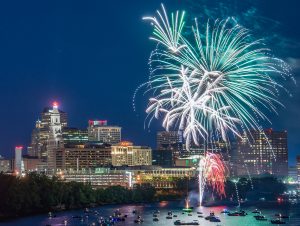
Hebron offers a strategic location in Central Connecticut. As one of Connecticut’s fastest growing towns, Hebron offers affordable land and homes for residential and business growth.
Since 1708, Hebron has supported diverse industries and innovation which began in its shops and Old Mills.
Today, Hebron is known for its state-of-the-art library, (pause) historic homes, (pause) and Sugar Houses (pause) that serve as the center piece of the annual Hebron Maple Fest.
Hebron has thousands of acres of parks, fields, recreation facilities, and trails including Gay City Stake Park and the Air Line Trail that draw walkers, hikers, horseback riders, and cyclists from across the region for the views, the relaxation, and the tranquility.
The quality of life offered in Hebron is unsurpassed, from its open space, and farmland, to its award-winning school systems that partner with families and the community to instill the fundamental values of learning.
A major community attraction is the Hebron Harvest Fair drawing over 100,000 people annually.
Hebron has an exciting new senior living facility with options for independent living, assisted living, and memory care that anchors the Town’s planned economic development area.
With a carefully structured Town Master Plan, and a community strongly supportive of positive development, Hebron has a unique vision for future residential and business growth to provide a full range of services for the community.
Hebron, the place to be. Visit hebronct.com today!
There are over 169 towns and cities in Connecticut, and while every town may have its story, Middletown stands out amongst them all, but we may be biased. Over 400 years ago Dutch explorer, Adriaen Block sailed along the Connecticut River and because of this river, the town of Middletown came into existence. In 1650, English Puritans settled in then, Mattabesek. Although miles from the nearest salt water, Middletown developed as a seaport and grew to have the reputation of a shipbuilding center.
A trip to Middletown will bring you straight into the hub of Main Street. Main Street is a unique mile long strip lined with elegant restaurants, cozy coffee shops, boutique shopping stores, and the Inn at Middletown with its rustic New England charm. If you are in the area, check out the Inn and book their Love Romance Package for a nice getaway. Main Street in Middletown is so unique, that it was announced “America’s Most Romantic Main Street” by The National Trust for Historic Preservation.” An honor that the town of Middletown does not take lightly. Middletown is a town full of people that takes pride in its history.
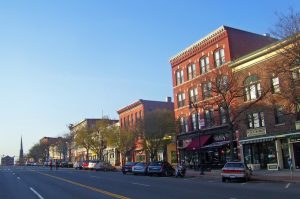
The Inn at Middletown’s story began in 1810 when it was built and occupied by the President of then Middletown National Bank. By 1919, the two-story grand home was purchased by the State of Connecticut and transformed into an armory for Connecticut’s National Guard. On one autumn day in the year of 2003, the Inn at Middletown opened its doors for the first time as Middletown’s ONLY boutique hotel to the public. Sixteen years later, the boutique hotel thrives with historic charm and exceptional service and is responsible for bringing up to 30,000 new visitors to the town annually, making its mark among the town of Middletown as a landmark attraction in the bustling city.
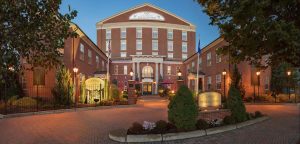
Not to mention, a mere three-minute walk from the historic Inn at Middletown is the famous O’Rourke’s Diner. The famous eatery was featured on “Diners, Drive-ins and Dives,” and has become a destination for diners throughout the Connecticut River Valley and is nestled right on Main Street.
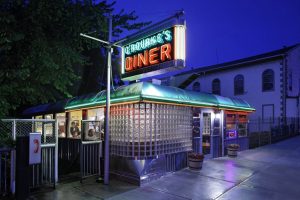
Not too far off from the Main Street is Middletown’s finest gems.
The alluring Wesleyan University is just 2 blocks from Main Street, and is a quaint college that has housed notorious people such as the Head Coach of the New England Patriots, Bill Belichick and Matthew Weiner, an American writer, director and producer known for his work on Mad Men and The Sopranos and named 2011 Time 100 Most Influential People in the World.
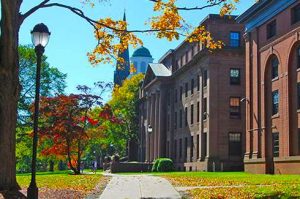
If you aren’t in town for romance or history, Middletown is still the perfect spot for family fun. Right around the corner, you will find Kid City Children’s Museum, an indoor interactive themed exploration area with pirate ships, a farm, and underwater cave. All exhibits are handmade and truly one-of-a-kind. A perfect family outing well spent.
Minutes from Main Street is two spectacular attractions you won’t want to miss. One of them being Wadsworth Mansion, a 16,000 square foot classical revival house that puts on public events and weddings. Located nearby for those wanting to be one with nature is Wadsworth Falls, a beautiful spot for hiking views, waterfalls, picnics, fishing and swimming.
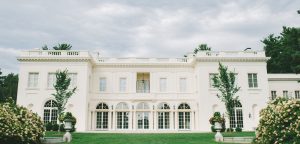
Lastly, is the Lady Katherine Cruises at Harbor Park. Lady Kate Cruises host events year-round that appeal to many such as murder mystery dinners, fall foliage, and chocolate and wine cruises sailing on the Connecticut River – the phenomenon that started it all. Sometimes it is small towns like Middletown that make a big impact on its state.
Comfortable living in a country atmosphere is what you’ll find in North Branford. Our small town charm is a major attraction to families and businesses alike.
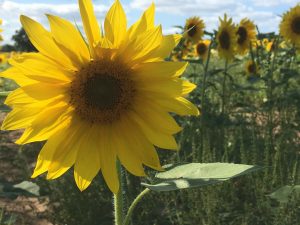
Founded in 1831, North Branford is a community of 14,000 residents with a long and proud history of farming. Residents and visitors take special delight in stopping at the many active farms in town to purchase the freshest fruits and vegetables in the region. Visitors may also enjoy a stop at one of our two wineries or newest farm brewery.
North Branford is a great place to live, work and play. We are home to two major recreational complexes that provide ample opportunities for individuals looking to enjoy an active and healthy lifestyle. When visiting, make sure you stop by one of our many businesses to eat, relax, and purchase that special something.
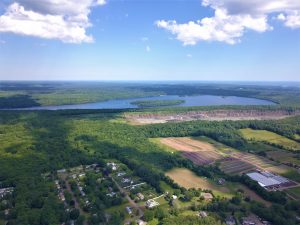
North Branford is a vibrant community with an excellent school system, newly renovated community and senior center and two active libraries. We are committed to smart growth and the retention and expansion of our business base while maintaining an exceptional quality of life. We invite you to visit and explore all that North Branford has to offer.
Mayor of North Branford, Bob Viglione
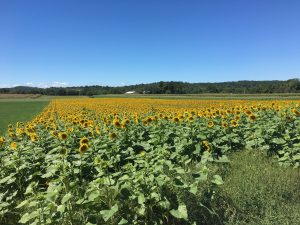
Old Saybrook, CT – Home of Notable Historic Connecticut “Firsts”
Old Saybrook is an iconic New England town envied for its charm and stunning location where the Connecticut River meets Long Island Sound. Woven into Old Saybrook’s story are notable “Firsts” in Connecticut history. Explore the sites of these notable moments and the people who wrote our local story. Appreciate the impact the Fort had on the Native Americans who fought the colonial settlers in the Pequot War. Understand the challenges faced by African Americans as they struggled for freedom and opportunity. Experience our small town through invigorating recreation, scenic beauty, unique retail, delectable culinary options, and contemporary entertainment at the Kate.
Fort Saybrook
The first fortification in New England was established in Old Saybrook in 1636. Fort Saybrook Monument Park marks the site at Saybrook Point where the Connecticut River meets Long Island Sound. The location features the fort site, a park with boardwalks through scenic riverside marsh, and sweeping water views. Historic Saybrook Point is also home to Saybrook Point Inn & Marina, Old Saybrook Mini Golf (with a mini replica of the fort as its 9th hole), and the Causeway that connects the Point with Fenwick.
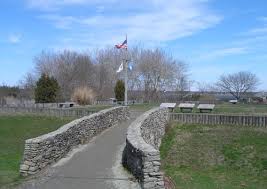
Miss Anna Louise James The first African American female pharmacist in Connecticut, Anna Louise James, grew up in Old Saybrook and took over the Old Saybrook family pharmacy with a soda fountain in town. “Miss James,” as she was known to locals, operated the pharmacy until 1967. The pharmacy still stands and today serves locally made gelato.
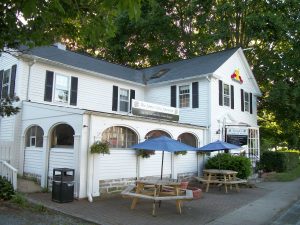
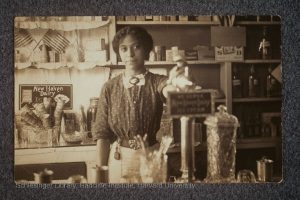
Photo by Susan Esty
Fort Saybrook Monument Park
Yale University
The first official site of Yale University was in Old Saybrook where Saybrook resident Nathaniel Lynde deeded a building and 10 acres of land to the Collegiate School in 1707. The school moved to New Haven in 1716 despite Saybrook residents taking to the streets to protest. The Yale Boulder with a plaque commemorating the nation’s 3rd oldest school is a short walk from Saybrook point and all that remains of the college now the site the historic Cypress Cemetery.
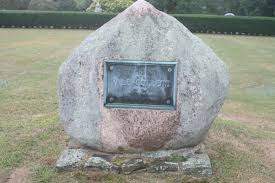
Fun in the Town of Orange
Established in 1822, the Town of Orange is 17 square miles of quiet neighborhoods with a New England charm and a boasting commercial section with shops, restaurants and entertainment venues. Between lively entertainment, hiking and open space, operating farms, fairs, and golf courses; there is much to do in Orange. With easy access to I-95 and the Merritt Parkway, visitors can spend the day attending a fair, shopping and grabbing food at a variety of restaurants, or enjoying one of the many entertainment venues.
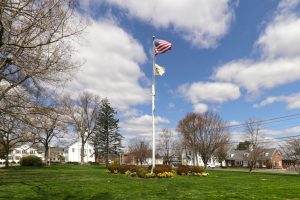
Entertainment & Dining
Stop by the PEZ Candy Visitor Center and pick up the latest PEZ sets and see all things PEZ on display, play a round of virtual golf at Golf Lounge 18, select an adventure and solve a puzzle to unlock a room at the Escape Rooms Connecticut, and participate in one or all 16 attractions at Urban Air Adventure Park.
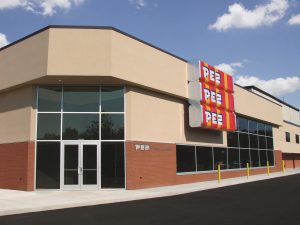
Most of the above entertainment venues have food on site, but there are over 40 family-friendly restaurants in many ethnicities throughout town to enjoy a meal. To name a few: Andini’s Restaurant and Gabriele’s Restaurant (Italian); Ola (Mediterranean); Noodle House, Shanghai Gourmet, China Pavilion, and Wasabi (Asian); Coromandel (Indian); Puerto Vallarta, Baja’s, and Taco Town (Mexican); Hook & Reel (seafood) and Mission BBQ (Barbecue). For those who desire breakfast all day, visit Chip’s Family Restaurant or IHop.
The bar scene is alive with Latin Escape Bar & Restaurant and Orange Ale House & Grill, both serving pub food, showcasing live music and hosting fun events. Stop by Prime 16 for that perfect craft beer and gourmet burger or gather in Eli’s lively bar or out-door patio.
For a more relaxing atmosphere, visit Stappa Vineyard and try their selection of reds and whites inside the winery or outside, amongst the picturesque setting of 5,000 grape vines.
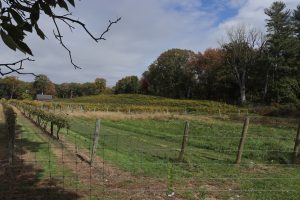
Community Events
Visitors wanting to attend community events, there are many fairs, carnivals, and events from May through December at the Orange Fairgrounds at 525 Orange Center Road, as well as other locations throughout the town. To name a few: the summer kicks off with the Annual Strawberry Festival the second weekend in June, where visitors can enjoy craft vendors, a Red Car Show, food trucks, children’s games, carnival rides, hayrides, and as always--strawberry everything; the Orange Volunteer Firemen’s Carnival is the first weekend of August and offers carnival rides, food vendors, and activities; and the Orange Country Fair gives that old-time country vibe with a tractor pull, exhibits, contests, food vendors, farm animals, and activities. For information on upcoming events, check the Orange Economic Development website’s Community Calendar on the Events page at www.OrangeEDC.com.
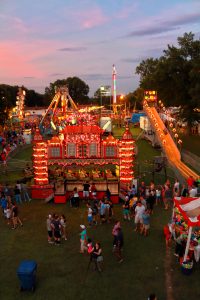
Farms & Markets
The town has ten operating farms, with each farm offering something unique, such as fresh produce, milk, eggs, ice cream, honey, meats, Christmas trees and holiday décor, hayrides, and private events. Some of these farms participate in the Orange Community Farm Market, which is held at the Orange Fairgrounds Pavilion on Thursdays, 3:30 – 7:00 from June to September. In addition to farm vendors, others include natural pet food, natural soaps and beauty products, baked goods, crafts and food trucks. Additionally, live bands perform throughout the summer under the Gazebo on select Thursday evenings as part of the Town Concert night program. Farm market vendors return at the Holiday Farm Market & Craft Fair, which takes place the Thursday prior to Thanksgiving. For more information regarding farms, farm market, holiday market, or concert schedule, go to FarmMarketOrange.com.
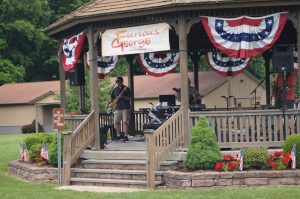
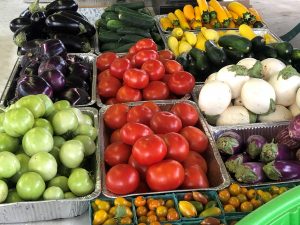
Historical Sites
Visit the Town’s historical homesteads and learn what it was like in colonial times. The Orange Historical Society maintains three houses: The Stone-Otis House, a restored 1830s home; The Academy, built in 1878 and now a museum and antique shop; and the Bryan-Andrew House, a 1740 residence built by one of the first Orange families. The Stone-Otis House is open by appointment; the Academy is open Saturdays 10 am to 3 pm, and the Bryan-Andrew House is open by appointment. For more information go to orangehistory.org
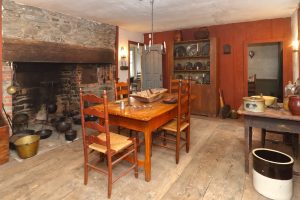
Outdoor Activities
For active individuals, there are three 18-hole golf courses (Grassy Hill Country Club, Race Brook Country Club, and Orange Hills Country Club) and over a thousand acres of hiking and walking trails set upon seven major areas all maintained by the town. Hiking trail maps can be downloaded at OrangeCTConservationcommission.com.
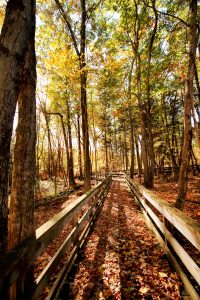
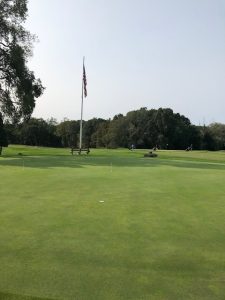
Shopping
Shopping is robust with big box and privately-owned shops along Route 1. Fashion is alive at TJ Maxx, DSW, Backer’s and Kohl’s; and for just about anything, shop at the Christmas Tree Shop or Target. Home goods or furniture can be purchased at Raymour and Flanagan, Bob’s Discount Furniture, Ashley Home Store, Bassett Furniture and Home Depot. Customer service is provided to find the ideal shoe or sneaker at Hawley Lane Shoes, and the perfect children’s gift at Jesse’s Toys.
Stay
Reserve a room at The Courtyard Marriott or Homewood Suites, conveniently located near the I-95 entrance ramps, and continue your stay in Orange to enjoy more activities and fun.
Visit the following websites for more information: OrangeEDC.com or Orange-CT.gov
Nestled within the Willimantic River Valley, the Town of Stafford is an unexpected oasis of unique businesses, agricultural activity, outdoor recreation, world-wide manufacturing, entrepreneurial spirit, and quaint attributes. Located in North Central Connecticut on the Massachusetts border, the town of 12,000 residents is surrounded by a backdrop of rolling hills and punctuated by lively villages and boroughs. From Main Street to Mother Nature, Stafford is an equal balance of eclectic and rustic.
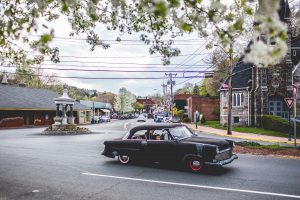
Stafford is wrought with nostalgia and history of centuries past, but has new energy as a place to shop, unwind, dine, and explore. Whether you are a lover of music, fast cars, art or agritourism, Stafford has it all. Downtown exudes a friendly, hometown atmosphere – an attitude that makes visitors feel like friends – with a chill, artisan vibe. From handcrafted hard cider to do-it-yourself art studios, performance venues, and self-made products, Stafford is steeped with distinctive independent merchants, eateries, service experiences, boutiques, antique shops, and more. In the warmer months, the landscape is enhanced with efforts of the Stafford Garden Club while adjacent parks become a scene for festivals and live music.

Whatever the season, Stafford provides a host of events and traditions that infuse the community with civic pride, volunteerism and economic development. From Friday nights at Stafford Motor Speedway – a must for any family with young race enthusiasts – to a myriad of festivals, here, there’s always a reason to gather. The Memorial Day parade kicks off a summer of [often free] events, including Stafford Arts Commission Summer Concert Series (June – August); Auto/Motorcycle Swap Meets (April/July/September); Summer Feast & Fireworks (July); MDA Benefit Ride & Concert (July); Monster Jam (July)Stafford Springs Blues Fest (August); Stafford Farm Day (September); Art Factory Graffiti Festival (September); Stafford Fallfest (October); and more. When the air becomes crisp, the holiday season brings ample artist markets and the Stafford Winterfest Parade of Lights in December. Additionally, the Stafford Historical Society Museum is open from 2PM – 4PM every second Sunday (April – November) and The Stafford Public Library hosts a variety of free, family-friendly events. Year-round, Arts on Main is the second Friday of each month from 6PM – 8PM, with music, artist receptions, and extended shop hours at participating downtown businesses.
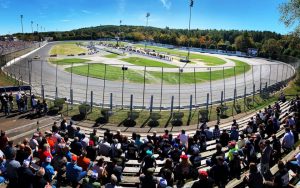
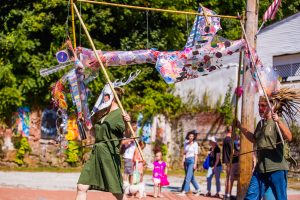
Stretching over 58-square scenic miles, Stafford is Connecticut’s third-largest town by area and boasts abundant four-season recreation opportunities. The vast landscape provides easy access to nature with multiple rivers, lakes with private and public beaches, two Connecticut State Forests (Shenipsit State Forest and Nipmuck State Forest), miles of trails, and ample farmland. Outdoor enthusiasts enjoy kayaking, bicycling or hiking blazed paths, angling, ice fishing, swimming, wildlife viewing, and more. Stafford is a peaceful retreat and also home to three seasonal campgrounds and numerous inns for overnight stays.
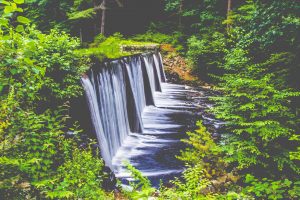
Despite an active downtown and busy events calendar, Stafford is largely a rural place with undeveloped land. Settled in 1719, Stafford originated as a small agricultural community and over 300 years later that same lifestyle not only continues, but extends to nearly every corner of town. A robust homegrown community offers farm stands piled high with seasonal produce and farm-fresh commodities. Backroads will lead you to berry picking, lavender fields, maple syrup producers, sustainable food and more. Stafford also boasts two Farmers’ Markets, both in the western part of town, one Friday evening and Sunday morning/afternoon.

Stafford is located seven miles from Exit 70 on Route 84, and less than 30 minutes from both Manchester and Enfield, Connecticut. To learn more about the Stafford community, attractions, businesses, and online calendar for seasonal events that are free and open to the public, visit explorestaffordct.org, staffordct.org
The Phelps-Hatheway House & Garden – Suffield CT
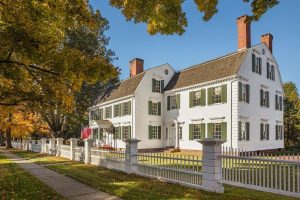
Shaded by a 300-year-old sycamore tree, The Phelps Hatheway House and Garden tells the fascinating tale of two very wealthy colonial men, the style they lived in and their boom to bust stories. Located in the Main Street Historic District of Suffield, CT, this 18th century home is a renowned architectural masterpiece of the Connecticut River Valley. It offers a glimpse into 18th century life, our nation’s architectural history and features many important Connecticut made furnishings for visitors to enjoy.
The main center chimney structure house was built in 1761 by Shem Burbank for his bride, Anna Fitch Burbank and here they raised a nine children. Mr. Burbank was a loyalists, an American colonists who stayed loyal to the British Crown during the American Revolutionary War and therefore Burbank’s business suffered during the American Revolution. In 1788, he sold the house to Oliver Phelps originally of Windsor, who served as Deputy Commissary under George Washington and later a successful land speculator. Flaunting the riches he had earned from western New York land investments, Phelps altered the existing house and in 1794 added a wing in the current high fashion. This wing still has rooms with their original vibrant-colored imported Parisian wallpapers. A depressed real estate market forced Phelps to foreclose on the property in 1802 and move to Canandaigua, NY where he died in 1809. After Phelps’ death in debt, the house was purchased by Asahel Hatheway who accumulated an attic full of artifacts that document life from that time. The house remained in the Hatheway family until 1914; Sumner Fuller and his mother Emma were the next residents and carefully preserved the property which was donated to the Antiquarian & Landmarks Society (now Connecticut Landmarks) upon Mrs. Fuller’s death in 1956. CTL lovingly maintains and preserves this amazing piece of history. Today, the museum boasts an extensive collection of 18th-century antiques and an exquisite collection of bed coverings & garments from the 18th & 19th centuries, while the grounds feature a formal parterre garden, a large herb bed, and scattered flowering shrubs.
The Phelps-Hatheway Garden
In 1963, the Suffield Garden Club adopted the restoration and maintenance of the Phelps-Hatheway gardens on the south lawn as a civic project. Hartford landscape architect Mary Wells Edwards was commissioned to design the formal parterre garden, as well as a large herb garden, in 1964. Inspired by the historic wallpaper in the house, Mary Edwards chose a combination of early Dutch formality and late 18th-century free design used in England. The garden features pink and white 19th-century peonies that are now 150 years old! Two raised beds serve as instructional platforms for the site’s youth programming and provide plant material for our programming, including salves, teas and textile dyebaths.
Connecticut’s Historic Gardens (CHG) cultivates a passion for the diversity of historic gardens at distinctive historic homes in Connecticut. Fifteen historic gardens dotted throughout the state have joined to form Connecticut’s Historic Gardens, including three of Connecticut Landmark’s properties: the Bellamy Ferriday House & Garden in Bethlehem, the Butler-McCook House & Garden in Hartford, and the Phelps-Hatheway House & Garden in Suffield.
Filled with touches of 18th-century life in Connecticut, The Phelps-Hatheway House & Garden provides an elegant, historic space to host any number of wedding events in comfort and style and is located in Suffield’s Historic District, a 10-minute drive from the Bradley International Airport, making it a perfect location for out of town guests to access.
The delightful Summer House offers an idyllic space to hold an intimate wedding ceremony of 32 seated guests. Many of the opulently decorated rooms within the house itself are perfectly suited for a variety of wedding celebrations such as rehearsal dinners, engagement parties, or mid-sized ceremonies. These event rooms can accommodate between 20 and 85 guests depending on your needs and style of event. This property also offers an event barn, originally built in 1867, which offers an ideal space for a lively cocktail hour or wedding reception, capable of accommodating 75 seated guests. The barn event space oozes rustic charm and offers couples a wonderful space to create their wedding aesthetic. For an outdoor wedding event, The Phelps-Hatheway House & Garden can accommodate up to 250 guests on their expansive lawn area, perfect for pitching a wedding marquee for a Summer reception.
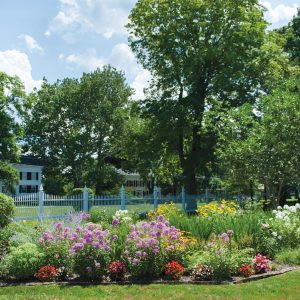
We are so fortunate that much remains of this beautifully preserved historic home which highlights the luxurious lifestyle enjoyed by two wealthy 18th century Connecticut Valley families until their fortunes collapsed.
Many residents at Phelps-Hatheway House have seen glimpses of spirits and have heard lovely classical music which seems to be coming from the ornate Phelps wing. Perhaps more history remains here than meets the eye!
Check out Suffield's Seward Johnson Art Trail!
Suffield CT Facts
HOW IT GOT ITS NAME: Originally part of Massachusetts, the area was called Southfield because it was the colony's southernmost town. The local pronunciation was always Suffield however, and in 1764 the name was made official.
HISTORY: The area was settled in the early 1670s when the Massachusetts General Court authorized a group from Springfield, led by Major John Pynchon, to settle a town "on the west side of the Connecticut River towards Windsor." Due to an early surveying error, the town was believed to belong to Massachusetts until it was annexed by Connecticut in 1749.
TOBACCO: One Suffield's earliest industries, tobacco played a vital part in the development and growth of the town. Suffield was home to the country's first cigar factory when a Cuban man was hired in 1810 to teach women how to roll "long nines."
EARLY EDUCATION: Suffield Academy, a private school established in 1833 as the Connecticut Literary Institute with the mission of training young men for the Baptist ministry, served as the town's high school until 1939.
DID YOU KNOW? When the British closed the Port of Boston in retaliation for the Boston Tea Party, Suffield residents supported their fellow colonists by issuing the first known declaration of independence in America in July 1774.
Summarized Biography:
Tolland—a town that blends rural charm and suburban conveniences—is twenty miles from Hartford and seven miles from the University of Connecticut. Interstate 84 provides easy access to Tolland, via exits 67, 68 and 69.
Tolland was originally a part of the Town of Windsor. Settlers came to this area in search of new homesteads for their growing families. In 1713, an appointed committee laid out a settlement and the General Assembly was petitioned to charter the settlement as a town. With a Charter in hand in 1715, the settlers chose the name “Tolland” based on a town in Somerset, England. Tolland was incorporated as Connecticut’s 49th town in May 1722.
In 1785, Tolland was designated the county seat. This designation brought business to Tolland, with a courthouse, jail, stores and taverns built around what is today Tolland Green. The Tolland Green Historic District was placed on the National Register in June 1997. Today, visitors can explore Tolland’s history with a visit to the Town Green. Many of these historic buildings have been re-purposed as museums and town facilities that are open to the public. In fact, the courthouse, which was rebuilt in 1822, is recognized as one of five examples of early civic architecture in Connecticut. Additional highlights are found below, under “destinations.”
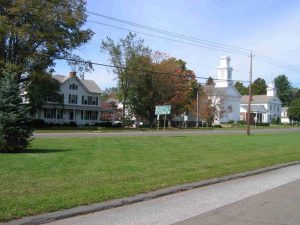
Until November 1973, the legislative body of the town was the Town Meeting. At that time, the new Town Charter provided for the legislative functions to be shared by the town Meeting and the Board of Selectmen. The Town Council became the primary legislative body under Charter revisions approved at a referendum on November 7, 1984.
Today, Tolland offers thousands of acres of open space, with hundreds of miles of trails. In addition to over a dozen town-owned hiking areas, Tolland is home to state parks and forest land, Shenipsit Lake and the Willimantic River. Tolland has a strong volunteer base, with a number of active boards, commissions and civic groups. With our numerous athletic facilities, Tolland embraces an array of outdoor sports and we host a semi-professional football team.
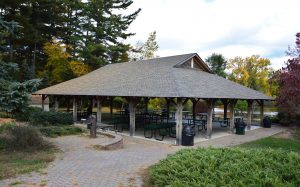
The Hicks Municipal Building was built as the Ratcliffe Hicks Memorial School in 1908. The Hicks – Stearns Homestead is also a museum. The Tolland Board of Education building started life in 1830 as Tolland County Bank. Directly across from the Municipal Building the town’s original 1879 Town Hall has become the Tolland Arts Center. The Courthouse recently became a museum of the Tolland Historical Society and leases the first floor to the French Canadian Genealogy Library.
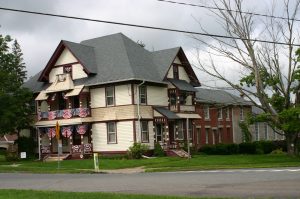
Attractions:
- Walking & hiking trails – For maps of town conservation areas, see: https://www.tolland.org/open-space-hiking-trails
- Museums – Hicks-Stearns Museum, Benton Homestead Museum, Old Tolland County Jail & Museum, Military Museum, Old Tolland County Courthouse Museum
- Shenipsit Lake – hiking, fishing & boating (oars or electric only)
- Crandall Park – hiking trails, baseball/softball/soccer fields, pond for swimming, beach, tennis/pickleball courts, Pavilion rental
- Cross Farms Recreation Area – disc golf (18 holes), baseball/soccer fields, concession stand, hiking trails and home of
- Adam’s Adventure – a playground where children of all abilities can play freely, located at the Cross Farms Recreation Area
- Heron Cove – basketball court, soccer/multipurpose fields, canoe launch on the Willimantic River
- Tolland Red & White – antique and gift store in the historic “corner grocery store” from 1815
- Star Hill Athletic Center – indoor athletic facility
- Local farms – Tolland is home to a number of farms where visitors can purchase locally grown products. See: https://www.tolland.org/agriculture-commission/pages/tolland-grown
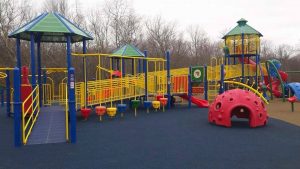
Accommodations:
- The Tolland Inn – A stylish New England Bed & Breakfast Inn on the Town Green
Popular Events:
- Eagle Freeze (January)
- Memorial Day Parade (May)
- Celebrate Tolland (September)
- Cider Mill Road Race (October)
- Tolland Recreation Center Halloween Trick-or-Treat (October)
- Annual Tree Lighting (December)
- Festival of Lights Parade (December)
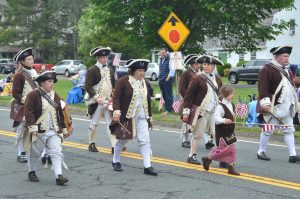

Tourism in Wallingford Connecticut
The picturesque town of Wallingford occupies a larger than average town geographic space. It has a wonderful mix of historical architecture, and beautiful open spaces and parks including the 1400-acre Tyler Mill Preserve. The Quinnipiac River runs through what was once known as “the plains” of Wallingford that were at one time an inlet from Long Island Sound. There are rolling hills, parks, and a precious and quintessential New England downtown with an amazing variety of shops and dining establishments for all who desire choices from simple and basic to gourmet and specialized.
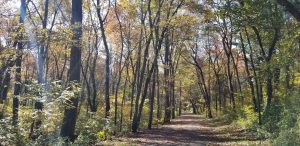
There are orchards and farms that are still productive and gorgeous to view and Wallingford is on the Connecticut Farm Wineries Passport that brings people from all over Connecticut to visit their two beautiful and extraordinary wineries, Gouveia Vineyards and Paradise Hills Vineyard. Several breweries have recently opened in Wallingford as well.
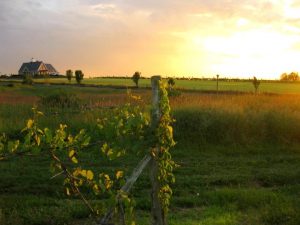
Town resident, Lyman Hall, was a signer of the Declaration of Independence and Wallingford has produced many famous persons since his time. If you go back to the 1950s and forward, you can track the huge number of famous celebrities who have come to Wallingford and still do at the historic Oakdale Theater, now the Toyota Oakdale Theater. Choate Rosemary School, one of the highest-rated prep schools in the world is located in Wallingford. John F. Kennedy graduated from Choate as have many other highly regarded and well-known people. The Wallingford Symphony Orchestra calls Wallingford home as well as the Square Foot Theater, a small local theater that puts on high quality live shows, and they have an active community theater as well.
Wallingford is centrally located between Hartford and New Haven with major highways running north-south and east-west through town. It can be reached easily from Waterbury and the shoreline. It would be hard to find a Connecticut resident (or New York or Massachusetts resident) who has not driven through town in-route to their destinations.
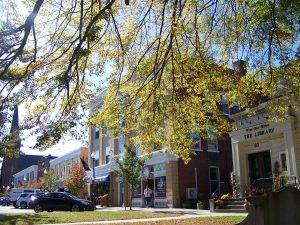
“A railroad runs through it,” is now a more meaningful message than in recent years because of the huge upgrade to the train systems in Connecticut by the state of Connecticut. They have a beautiful new railroad station with 17 trains a day heading to New Haven, Hartford and Springfield! There is route 5, North and South Colony Streets, which includes a terrific variety of attractions and is home to several major car dealerships and big box stores. Wallingford has a first-class bowling alley that is a consolidation of two alleys into a premier operation, there is a trampoline facility - Sky Zone for kids to jump and play and a fun Go-Kart race track.
Gaylord Specialty Healthcare and Masonicare, are two extraordinary healthcare facilities that attract people from great distances for their rehabilitation services, health and continuum of care.
Two high-end private clubs include the Wallingford Country Club and the Farms Country Club and many people from around the state have visited Wallingford for golf and tennis events at these facilities. They also have a public course, Traditions, that attracts people from around the state.
Because many people come to here for personal and business purposes, they host several high-class hotels that are located in very convenient locations for visitors to the community. In addition, Wallingford is delighted to be the home of the beautiful and historical Wallingford Victorian Inn.
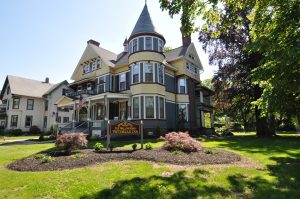
Every year, there is a major soccer event that occurs here. It is called the Twist Tournament and attracts hundreds of families to support and cheer for their children as they compete with kids from all over the state of Connecticut.
Wallingford is a welcoming community with so many ways to find comfort and fun as well as great food and wine! Stop by for a visit!
West Hartford is rich with history and contemporary in style. West Hartford has an impressive network of award-winning recreational facilities and offers a year-round calendar of social and cultural events.
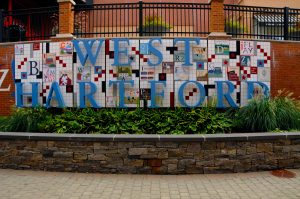
West Hartford’s public recreation areas include two municipal golf courses, the award-winning Rockledge Golf Club (18 holes) and Buena Vista Golf Course (nine holes), Veterans Memorial Skating Rink; two indoor pools at Cornerstone Aquatics Center, and four outdoor pools at Fernridge, Beachland, Eisenhower and Kennedy parks; six public parks, the three mentioned and Wolcott Park. Westmoor Park, an educational demonstration farm, provides nature walks and a farm environment that is particularly attractive to families with children.
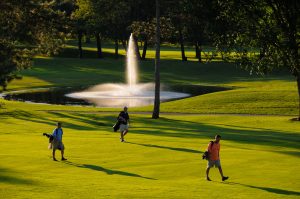
West Hartford offers hundreds of classes, trips and events year round at all of its recreation facilities including its two senior centers and community center.
Also in West Hartford, are the Metropolitan District Reservoirs, totaling 2,000 acres of undeveloped land with trails, located on Farmington Avenue, and Albany Avenue. Spicebush Swamp on Mountain Road is a nature preserve that offers fishing exclusively to children under the age of 16. West Hartford is a nationally certified Bicycle Friendly Community with a network of safe bicycle trails and routes throughout town.
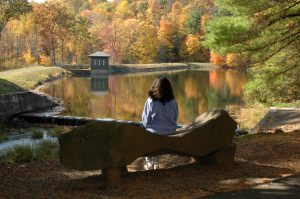
Year round, West Hartford has countless opportunities and venues to explore. On our eastern border is the world-renown Elizabeth Park that is exceptionally beautiful in June when the roses are in full bloom.
In the central areas of town, discover the birthplace of Noah Webster, the Children's Museum of Connecticut, Connecticut Veterans Memorial, cultural events at the University of Saint Joseph and the University of Hartford, and shopping and dining in the popular West Hartford Center.
West Hartford Center has been the community's hub since the late 1600's. This traditional New England town center has over 140 businesses including specialty shops, trendy boutiques, service providers, and restaurants, many of which offer outdoor dining. The retailers here offer one-of-a-kind items you cannot find anywhere else. The tree-lined streets of West Hartford Center, with its brick sidewalks, benches and vintage streetlights, create an ambiance for visitors to sit, stroll, shop and dine.
Nearby is Blue Back Square, a shopping, living, dining, and entertainment destination with over 40 businesses including several national establishments. A unique feature of this business district is Webster Walk, an open-air community space that is the venue for more than 150 outdoor concerts, performances and events year round.
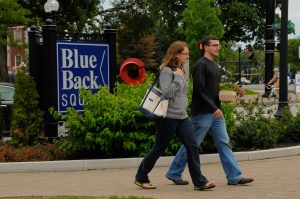
Throughout the year, West Hartford will periodically close a road for special events that encourage young and old alike to go outside to explore, experience, and enjoy music, parades, car shows, cultural events, fashion shows, restaurant tastings, charity walks, holiday events, and much more. West Hartford’s signature event is Celebrate West Hartford, its two-day fair held each year in June featuring a juried arts and crafts show, delicious food, entertainment, games, carnival rides and a 5K road race.
Iconic to West Hartford is the Noah Webster House & West Hartford Historical Society. Located at 227 South Main Street, this national treasure is the restored 18th-century birthplace and childhood home of Noah Webster, the creator of the first American dictionary and Blue-Backed Speller. The museum holdings include a diverse collection of decorative arts, manuscripts, books, and ephemeral artifacts related to Noah Webster as well as to the local community.
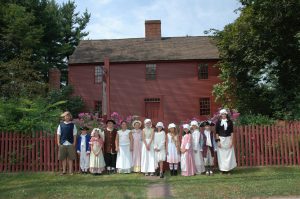
In the southern end of town, sits the historic Sarah Whitman Hooker House, a carefully restored early 18th century mansion house, the West Hartford Art League Galleries, and Westfarms, an upscale mall with 160 specialty stores.
Come explore all that West Hartford has to offer!
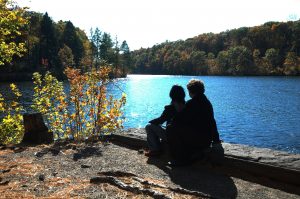
Submitted by: Renée McCue, public relations specialist
Town of West Hartford
Westbrook
By Susan Cinoman & Meri Wick
Westbrook calls out to people. Whether it’s the mystical pull of the sea, the gentle bobbing back and forth of the boats docked near the Singing Bridge, or the marsh grass rustling alongside the roadways, Westbrook casts its spell. We should know, we’re some of the people who fell under that magical spell.
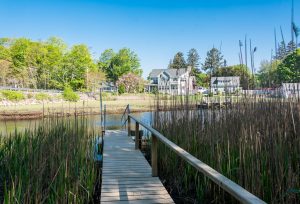
For years I’ve wanted to live near the ocean. I’ve written for theatre and television, and taught Drama in schools. Never were my thoughts far from the desire to smell salt air and feel the rhythms of a sea town all around me. My friend, Meri and her husband Marcus, shared that want, also working in the fast-paced fields of Sales & Marketing, but yearning for the life of a quiet sea town. For Meri and Marcus, it was the Westbrook Inn Bed & Breakfast that fulfilled their dream. My husband Doug and I found a cottage in the Sagamore Terrace, Old Kelsey Hill Beach area. In all our cases, we have fallen in love with Westbrook. 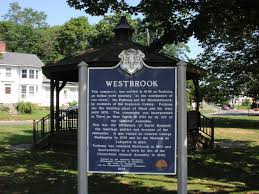
Meri shared with me some of her feelings about Westbrook when we first met.
“Oh, you’ll love it. There’s something about the pace, it’s slower. And the people are so nice, I mean, really friendly. It’s such a change from other places, and of course, it’s so pretty. The town feels like you’re stepping back in time.” Indeed it does – it quietly communicates the beauty of New England beginning with the perfect little gazebo on the enchanting town green.
For my husband and I, coming from a house in the woods, the expansive beach and charming small town is a change, but in the best way possible. I’ve enjoyed learning about Westbrook’s past, both its history and natural landscape.
Westbrook was frequented by Eleanor Roosevelt who used to visit her friends Esther Lape and Elizabeth Read. She often cites Westbrook in her personal diaries.
“A hot night and a cloudy sky this morning, but we are starting off to visit our friends in Westbrook, Connecticut. It ought to be a lovely drive if only it does not rain.”
Additionally, one of our greatest American comedians and actors, Art Carney, had a home here. He was most loved by Westbrook residents notes Thomas Kaplan of the Hartford Courant.
"He was a person who people actually saw in town, parking his car, going into the drugstore," said Shirley Lusk, co-chair of the fundraising committee of the Friends of the Westbrook Public Library, which is sponsoring the tribute. The library will dedicate its media area to Carney when the renovated library reopens next spring.”
I’d bet that Westbrook has drawn to itself many other notable characters. Certainly, the beautiful egrets and tenacious seagulls I’ve seen here are no less notable. There’s said to be a good population of majestic blue herons who love Westbrook, too. In fact, there are amazing bird watching options as the aviary population is great. Sitting on the deck at Bills Seafood or waterside at Edds place will give you prime viewing of Osprey’s nesting.

The natural landscape of Westbrook is no less impressive than its history. It houses the Stewart B. McKinney National Wildlife Refuge. It’s the point at which the Connecticut River empties into the Long Island sound, creating a vast variety of waterways and harbors. Kayaking these beautiful rivers is a treat! As is enjoying the sand beaches and sometimes rugged coastline Westbrook offers. Bustling Marina’s bursting with activity create a relaxed nautical vibe in town.
Westbrook’s dining scene is quite diverse and truly spectacular. From casual clam and lobster roll joints like Johnny Ad’s and Liv’s Oyster Shack; to some of the best burgers at Wayfair burger; casual, well-crafted bites at Westbrook Lobster or Braise & Brew; to upscale dining at Café Routier, Westbrook satisfies every appetite. Adorable local café’s like Julie’s Cup of Joe offer rejuvenation in the form of a steamy cup of coffee. If Breakfast is your thing, then Christies or Turtle Café deserve a stop.
While visiting, quaint B&B’s like The Captain Stannard Inn, the Bushnell House, or the Westbrook Inn Bed & Breakfast offer wonderful rooms, amazing hospitality and tasty breakfasts. The Water’s Edge resort caters to those who like a hotel atmosphere with a charming New England vibe.
These impressions just skim over the surface of all that Westbrook was and is, sort of like the rocks one might skim along the many placid marsh ponds, so close to the more dynamic shores. I look forward to many years ahead, exploring the waters, cafes, town buildings, paths and beaches that are just part of the magic of Connecticut’s gem of a true seaside landmark, Westbrook.
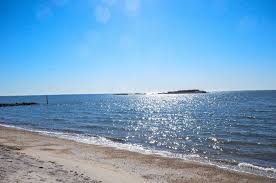
In 1634, Wethersfield was a wilderness of forest, meadow, river and marsh. Native Americans - Wongunks - had lived here for centuries until discovered by John Oldham and small band of enterprising traders. These pioneers carved the first permanent settlement in what would later become Connecticut, one of the 13 original colonies. Today, visitors can re-discover our nation’s heritage in an authentic, living, New England village, whose artifact-rich museums, historic homes, shops, restaurants and places of interest are nestled among tree-lined streets. Wethersfield is a living and working community that also happens to be deeply devoted to preserving its authentic New England heritage, now over 375 years in the making. Amble about the largest Historic District in Connecticut and you'll find 50 houses built before the Revolutionary War; 100 built by the time of the Civil War; and another 150 built shortly thereafter. Each fascinating home captures the essence of the style in vogue at the time.
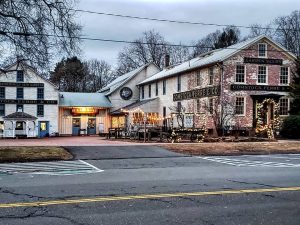
Any visit to Wethersfield gives you the chance to explore life's simpler pleasures: enjoying a summer evening with ice-cream cone in hand; browsing a local shop, country store or museum; relaxing at a sidewalk café; comparing notes with the locals about old home restoration; pausing at a garden shop or farm stand for fresh vegetables or something to plant in your own garden.
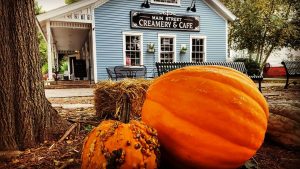
Stop by the Wethersfield Museum and Visitor Center at the Keeney Memorial Cultural Center to experience historical, cultural and community exhibits. Looking for advice on where to go next, ask our friendly docents or stop in to the Chamber of Commerce. If you are looking for historic houses, view the Hurlbut-Dunham and Captain James Francis houses. Wondering about the shipping industry, visit the Cove Warehouse at Wethersfield Cove. Our historic properties are waiting to be explored!
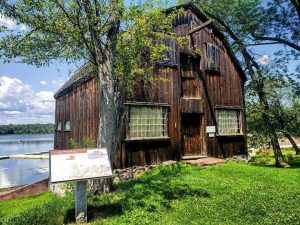
A visit to the Webb-Deane-Stevens Museum provides the quintessential New England experience. Visit the bed chamber where George Washington actually slept! Visitors are immersed in the life of mid-18th & early 19th centuries during informative and entertaining one hour tours. The Museum also hosts a number of annual events to entertain, educate & enlighten visitors.
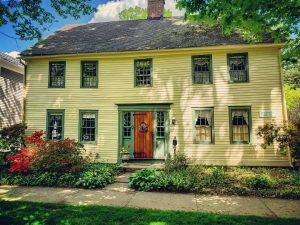
There is something for everyone to enjoy in Wethersfield with our seasonal events, fairs, carnivals and holiday celebrations. Come to Wethersfield, and discover the place where history lives.
